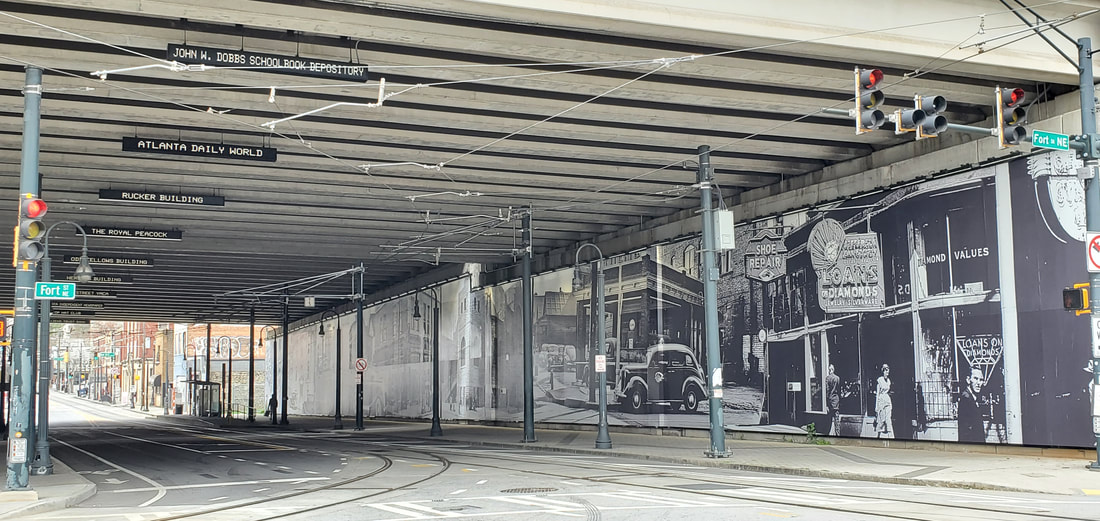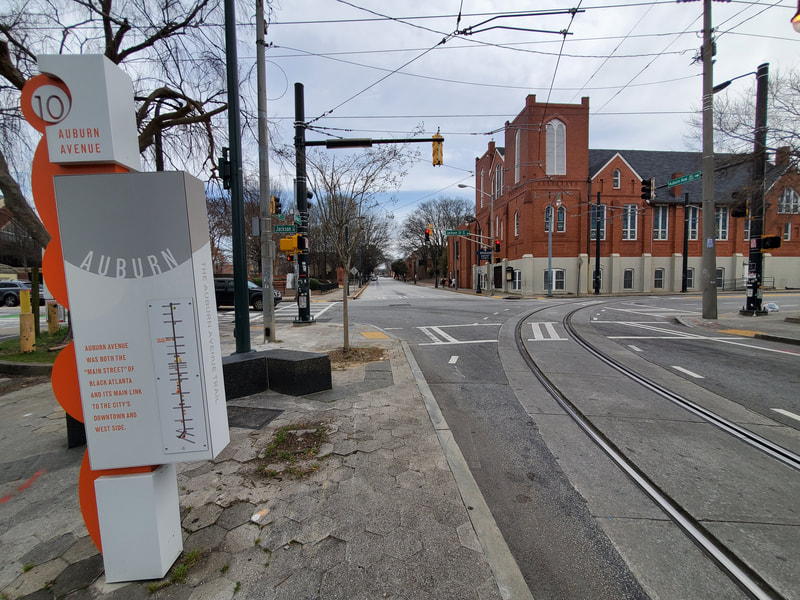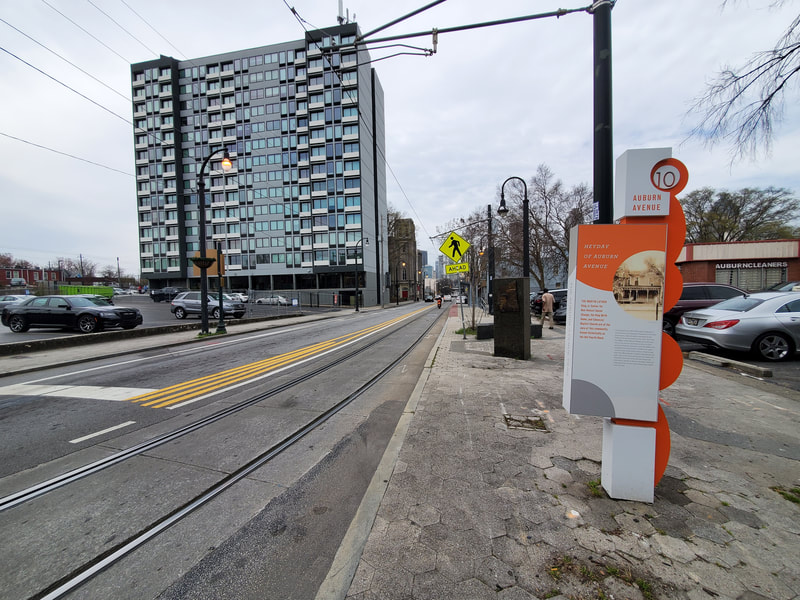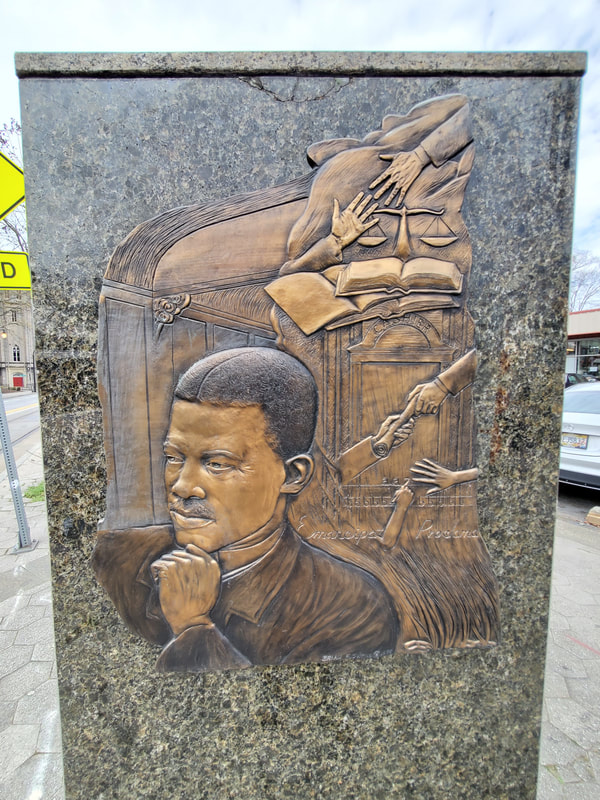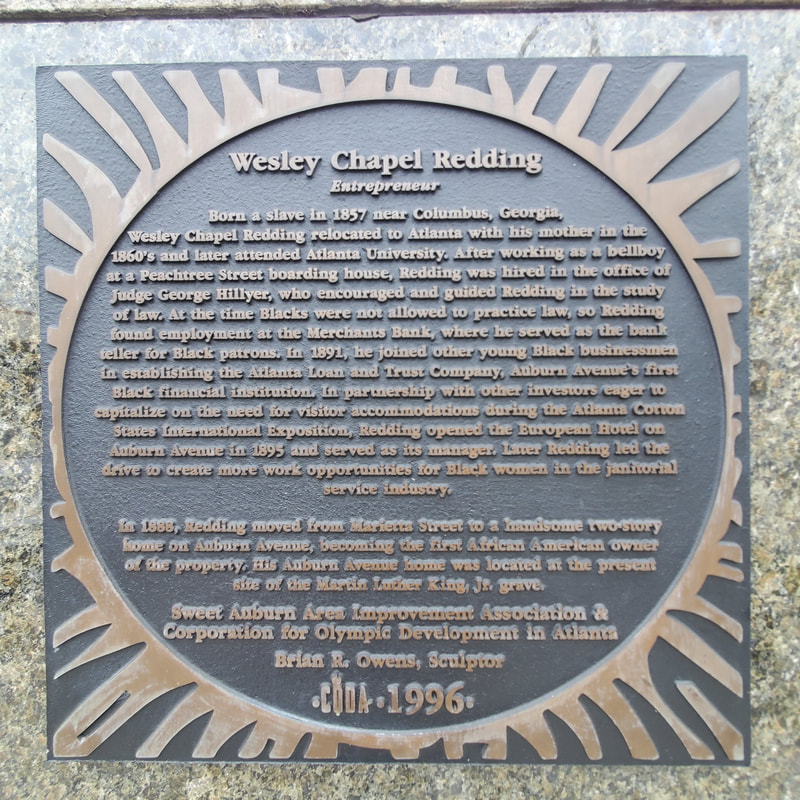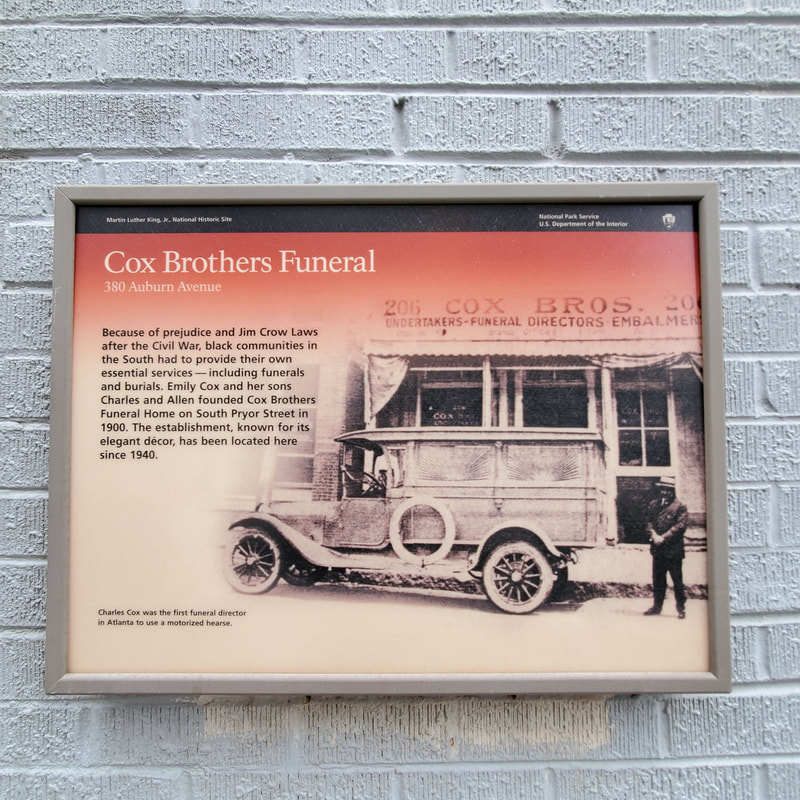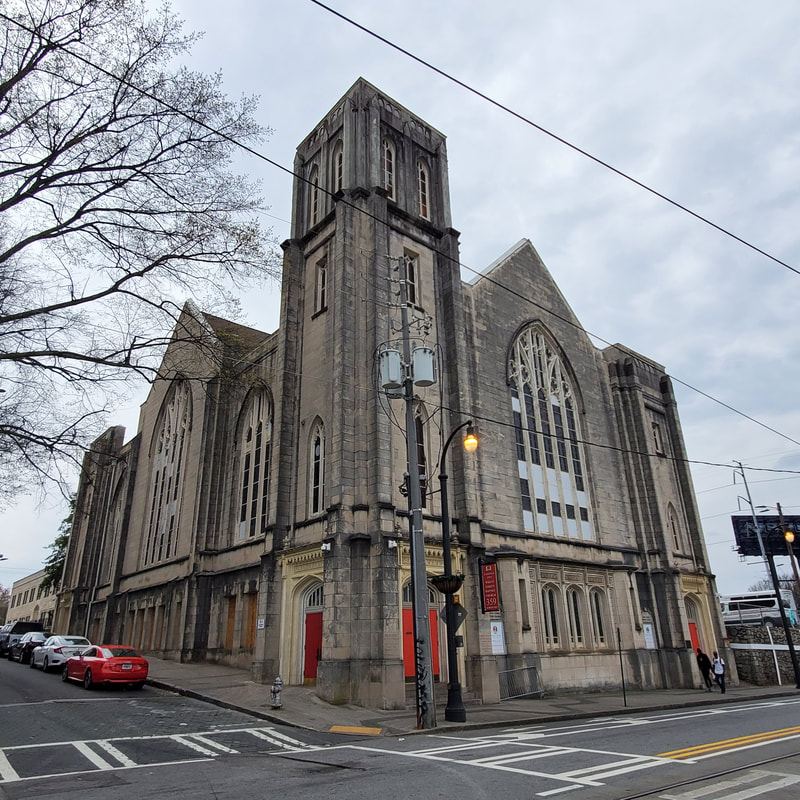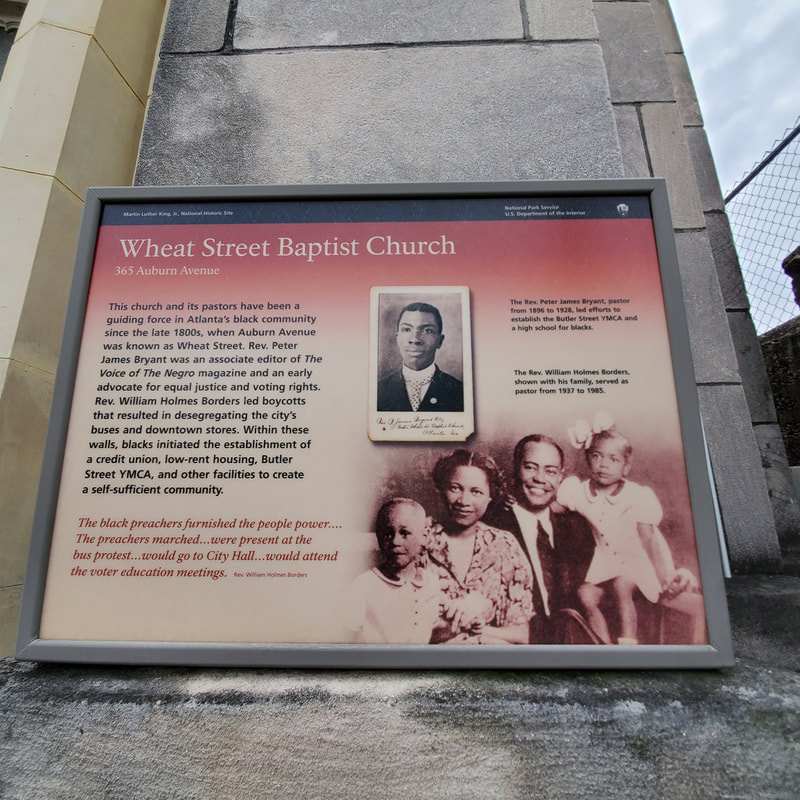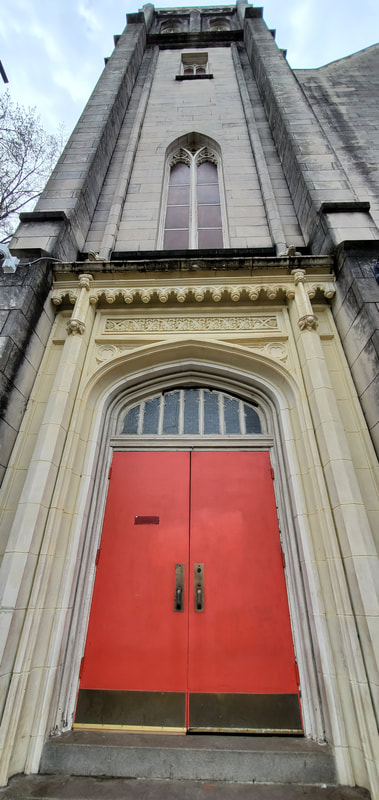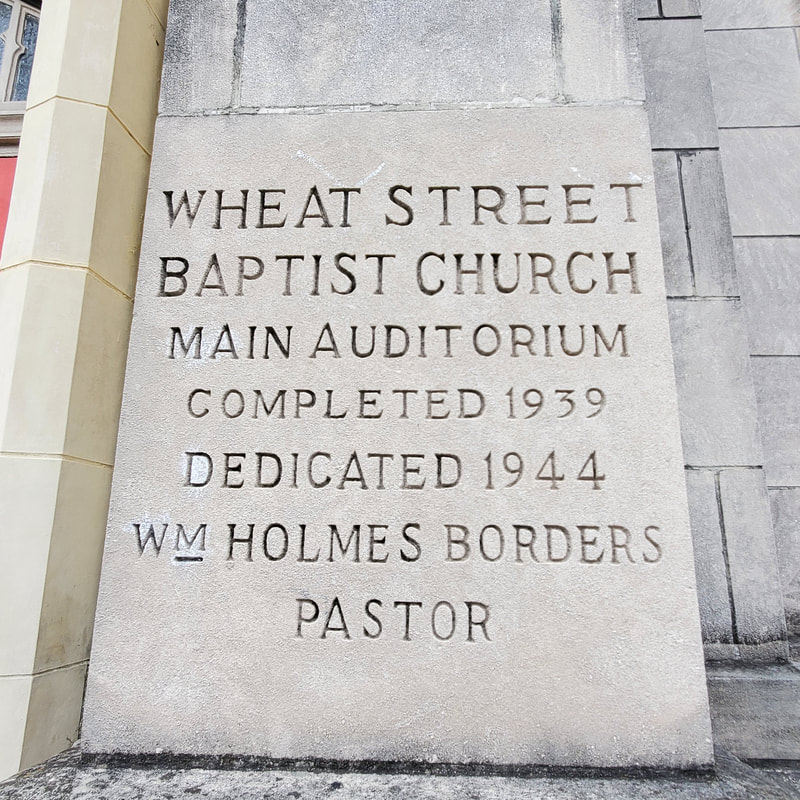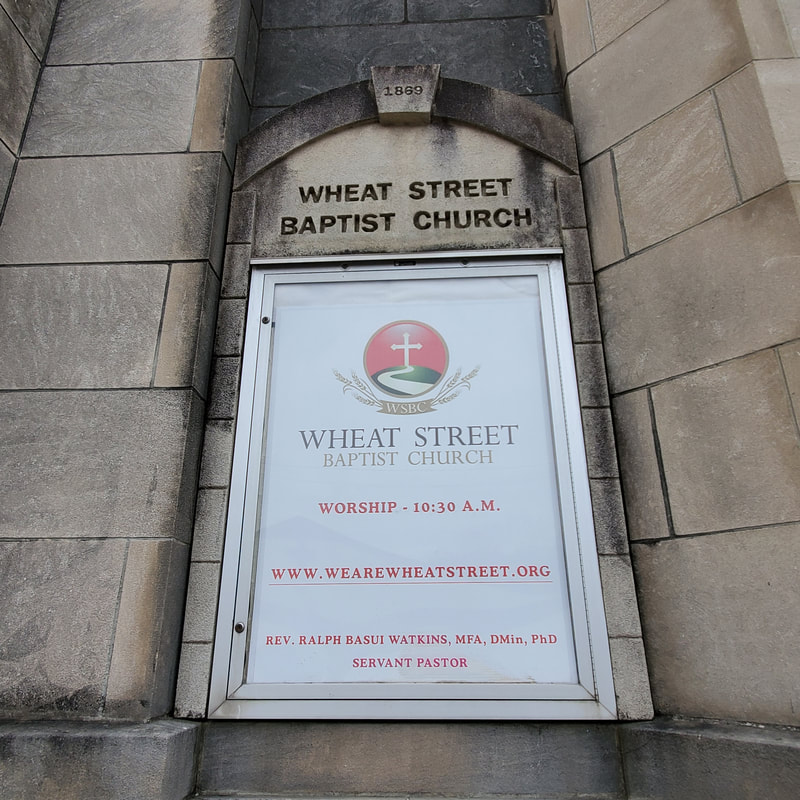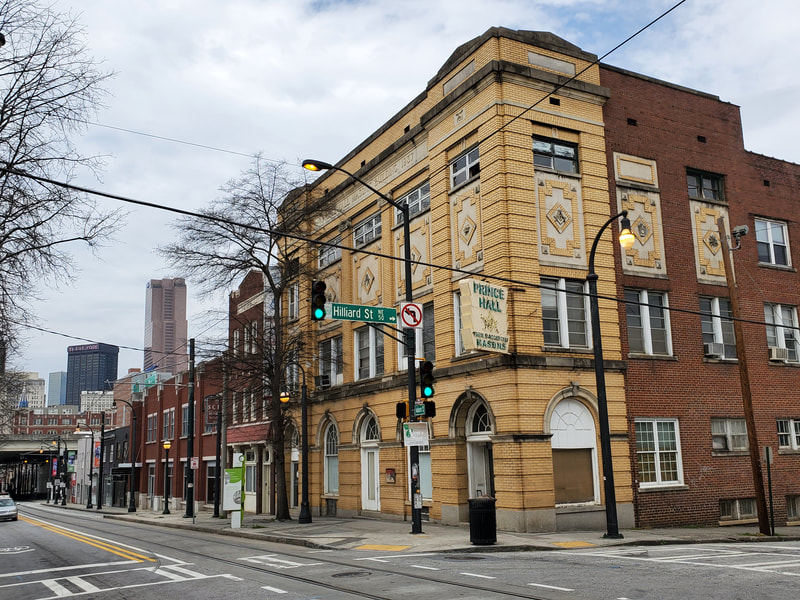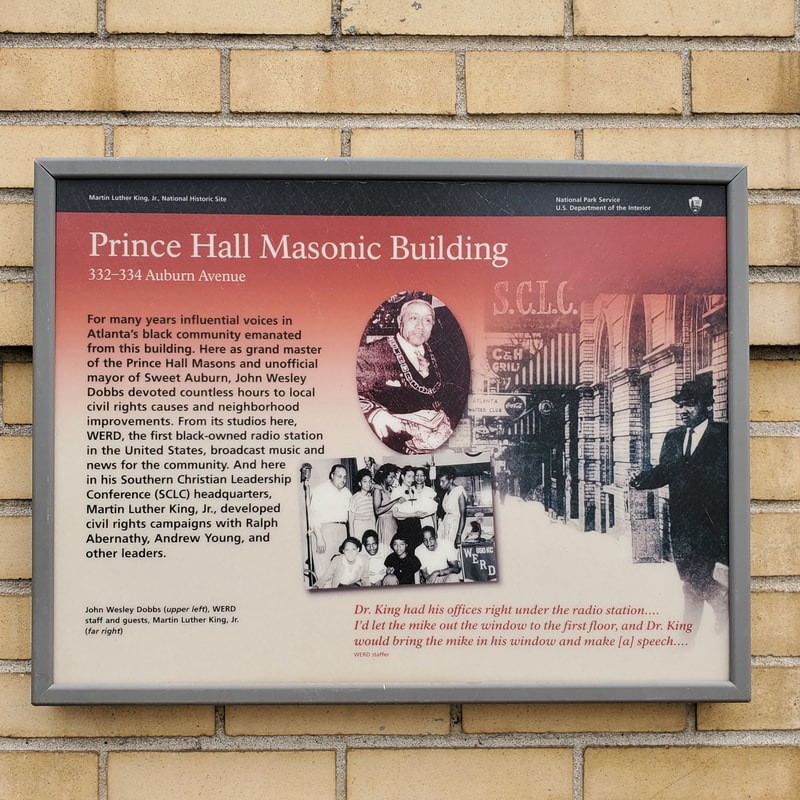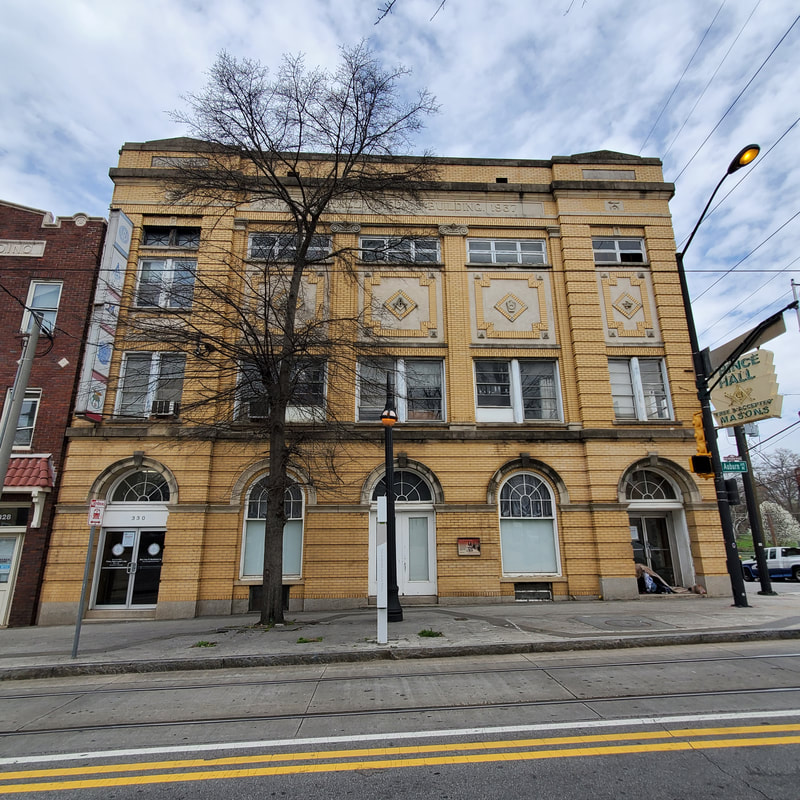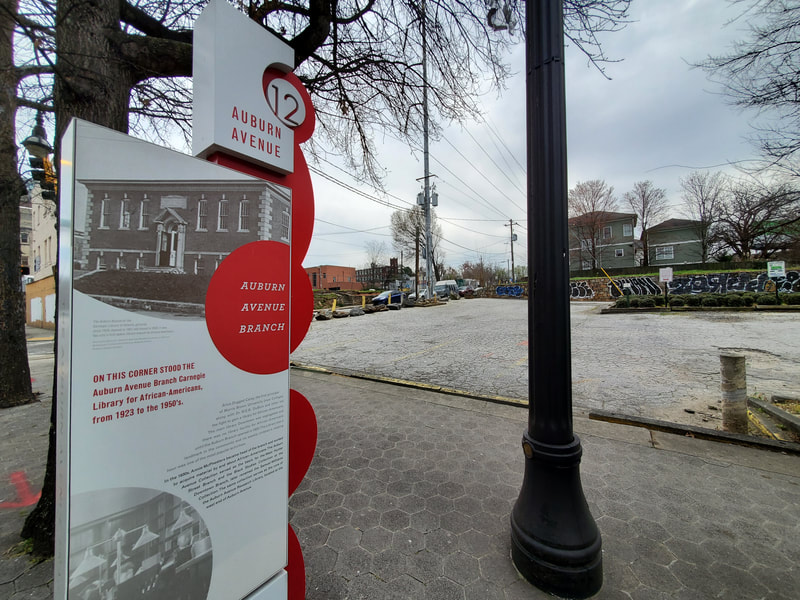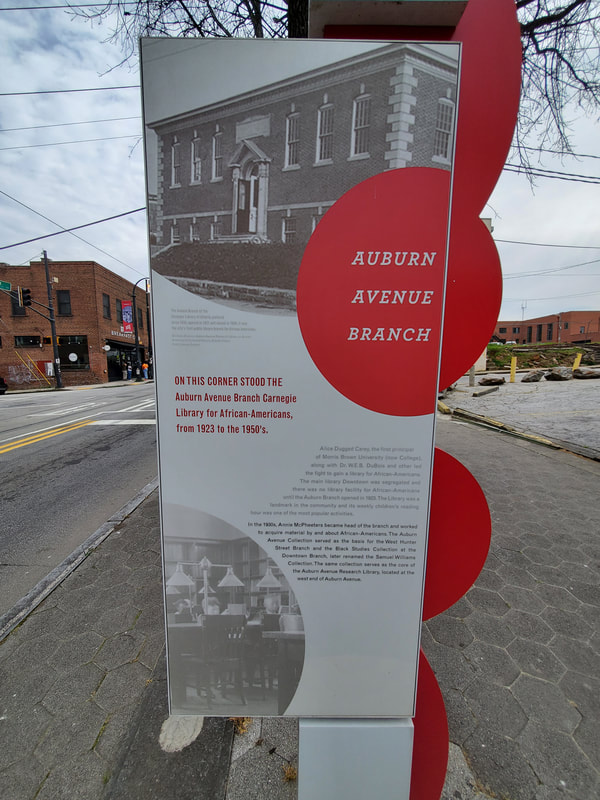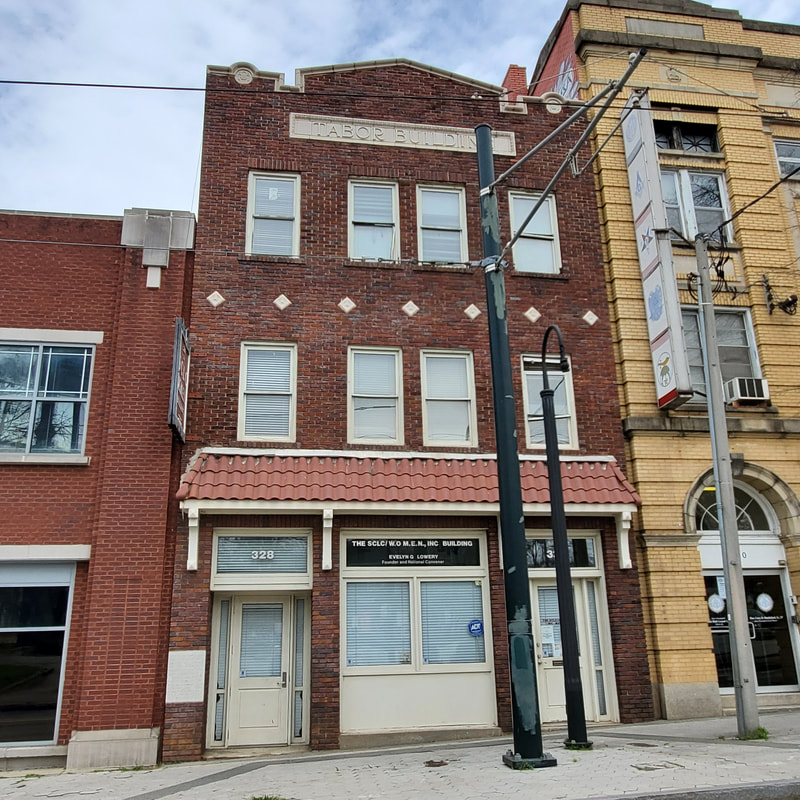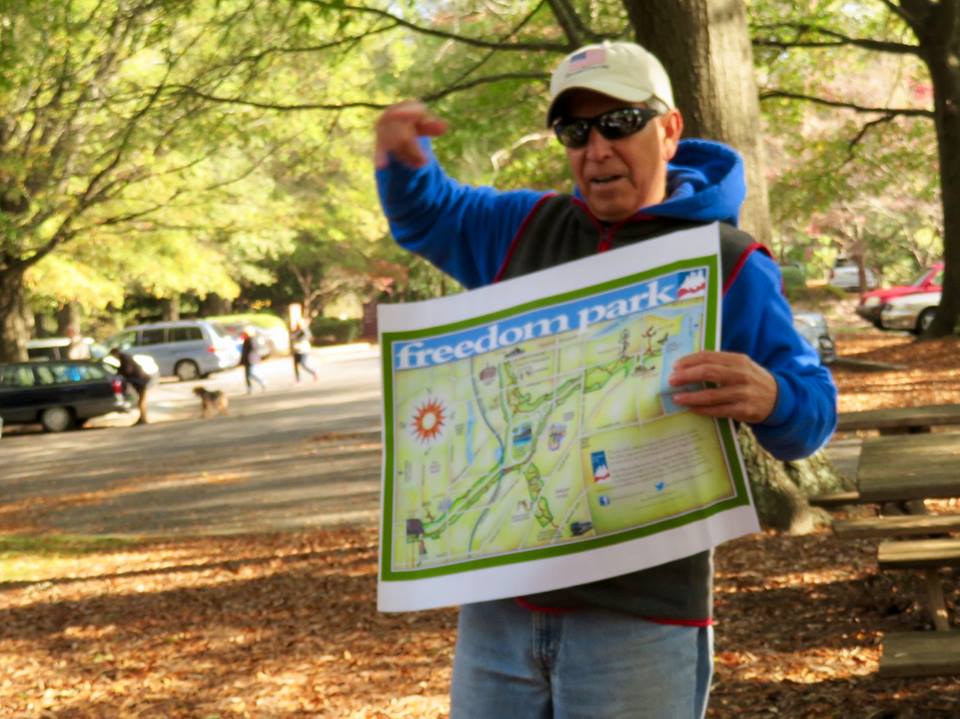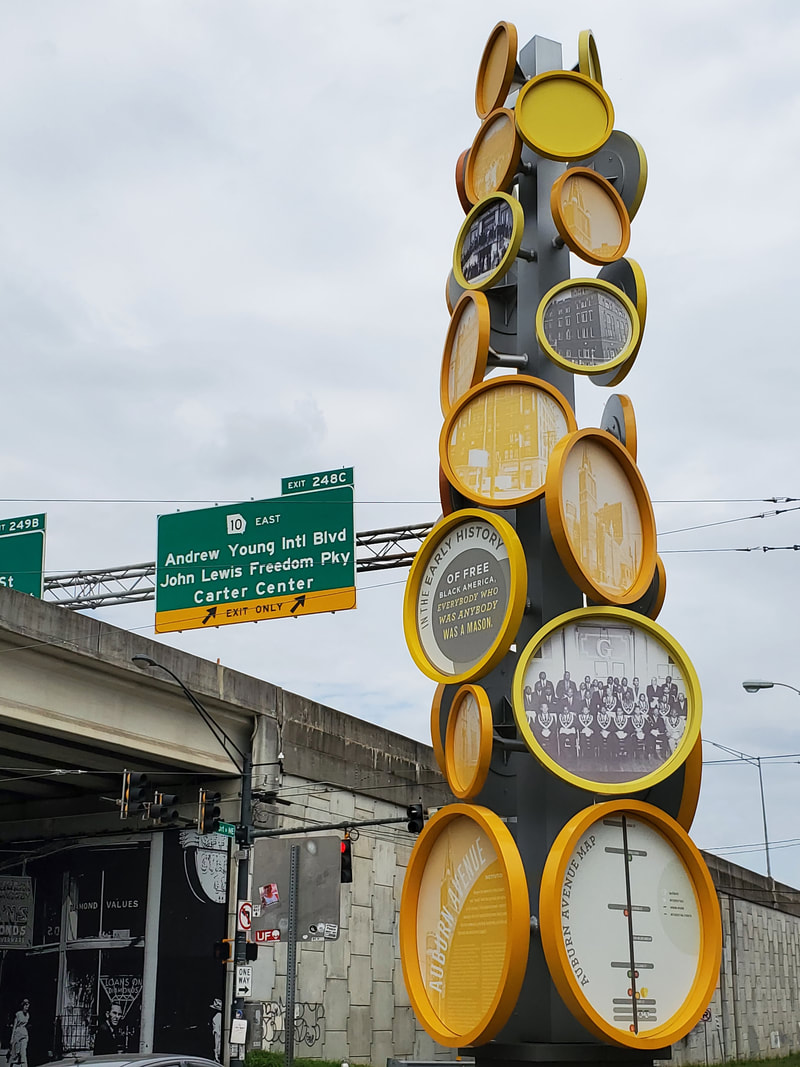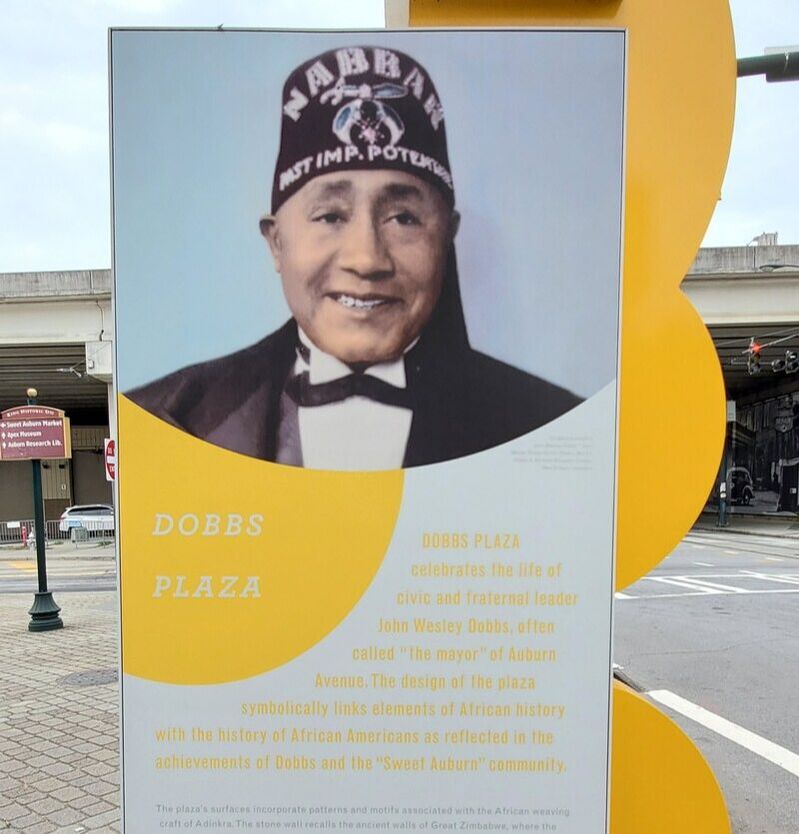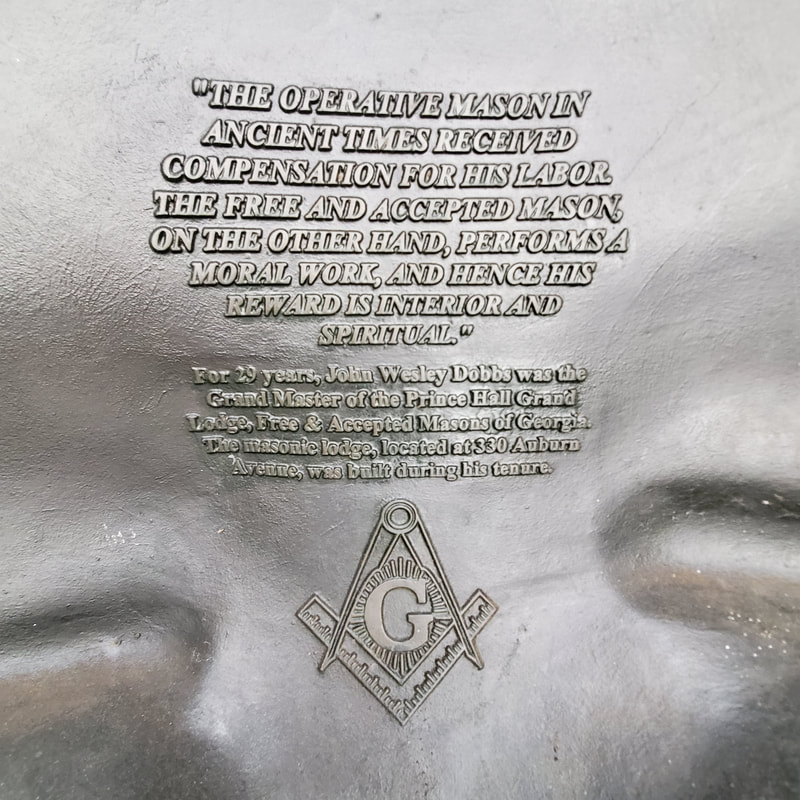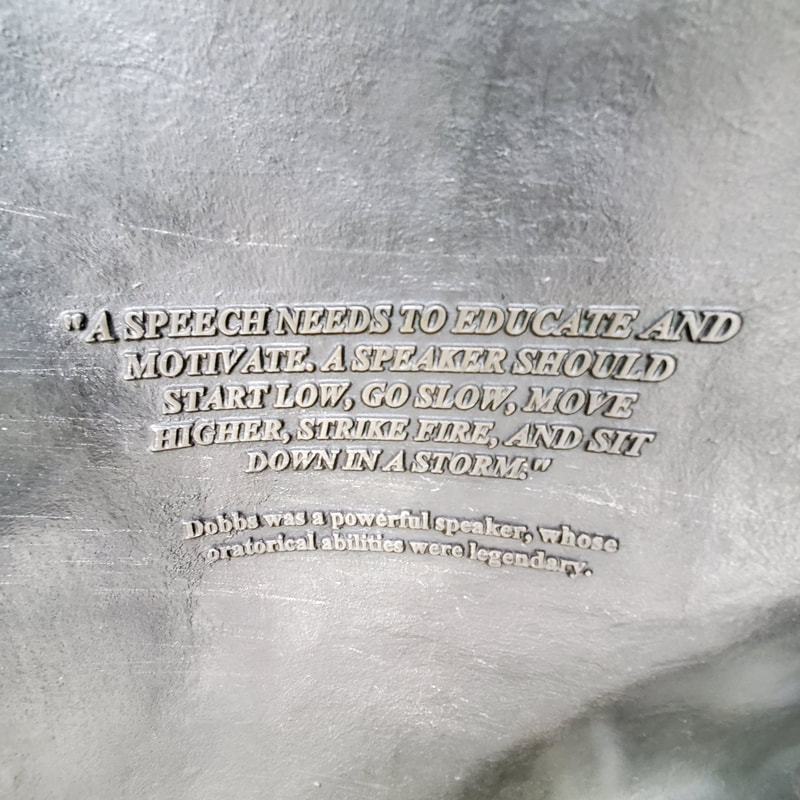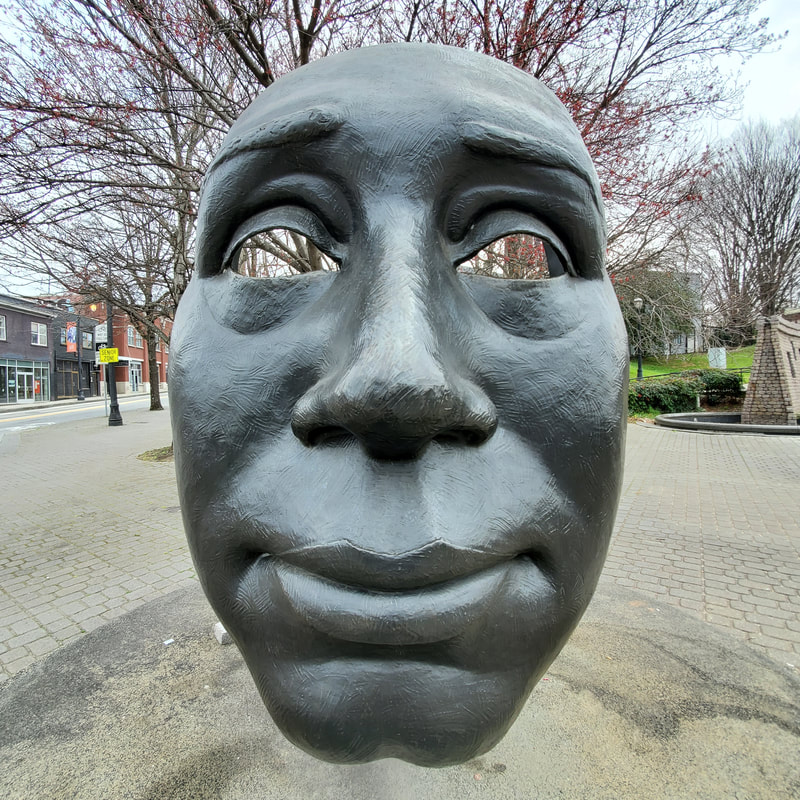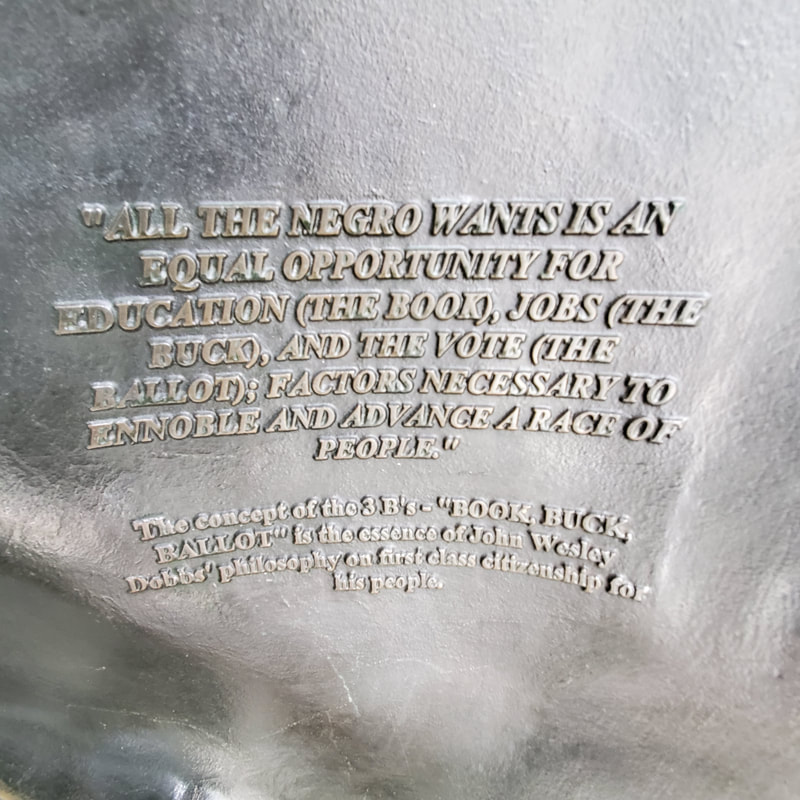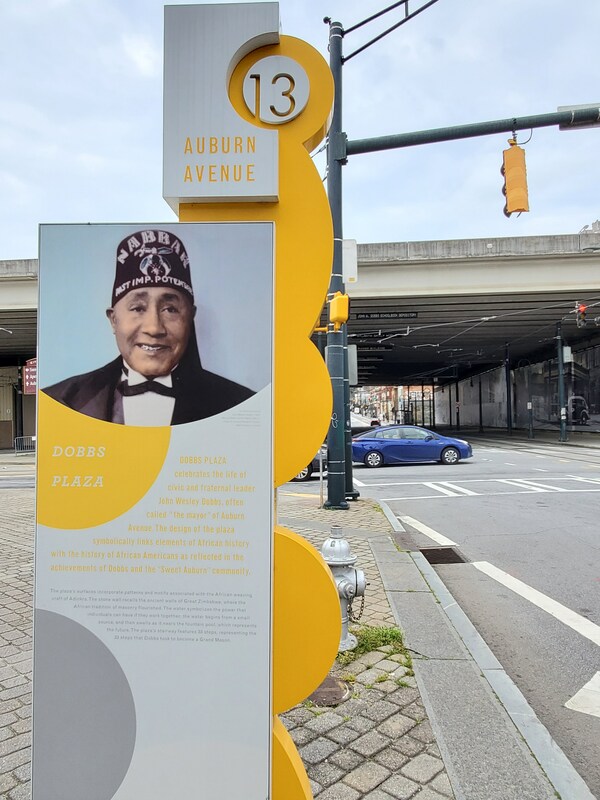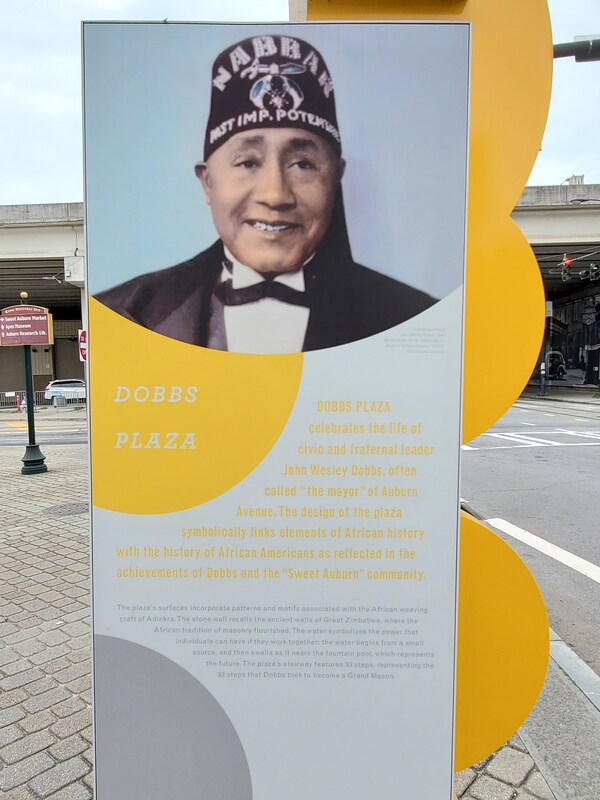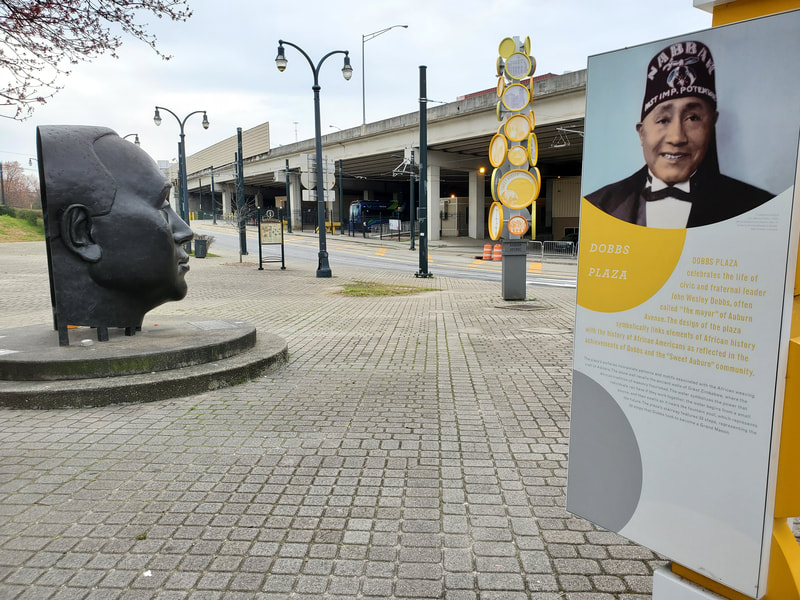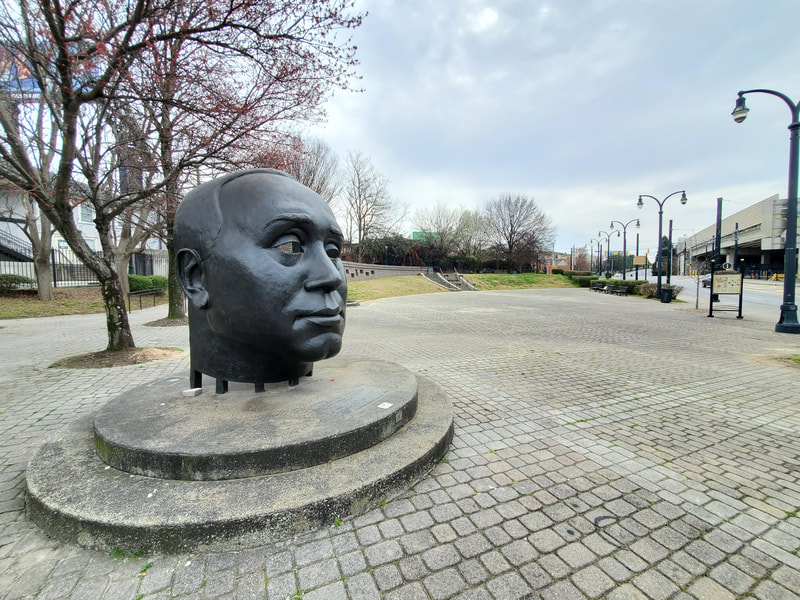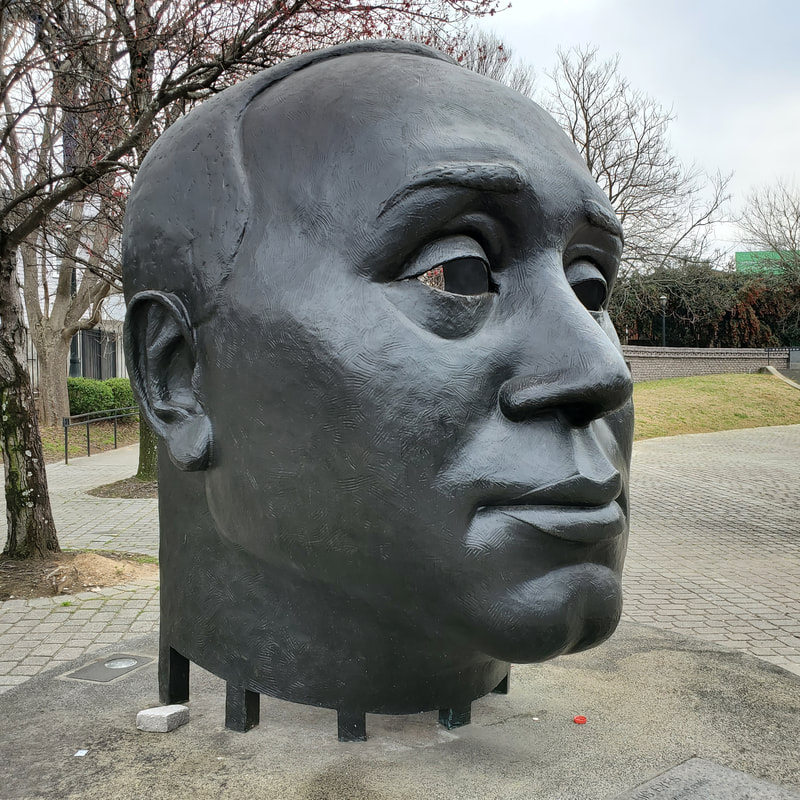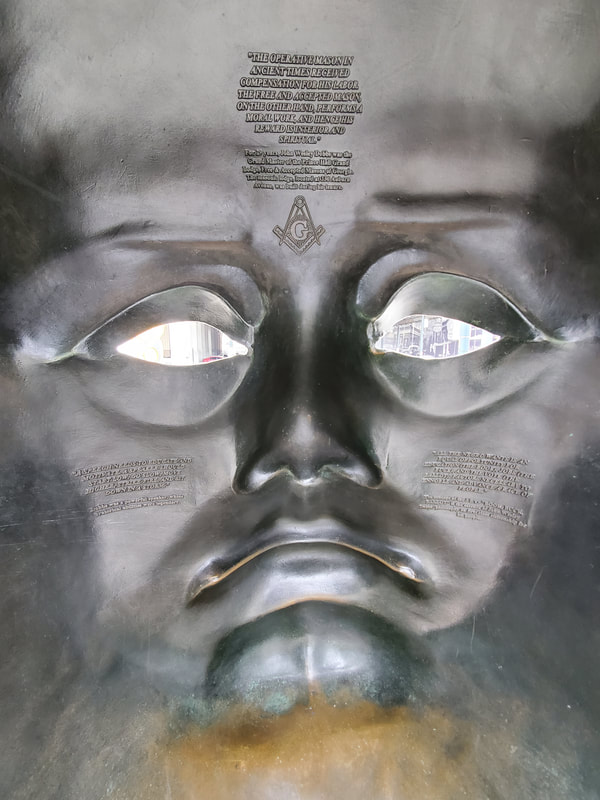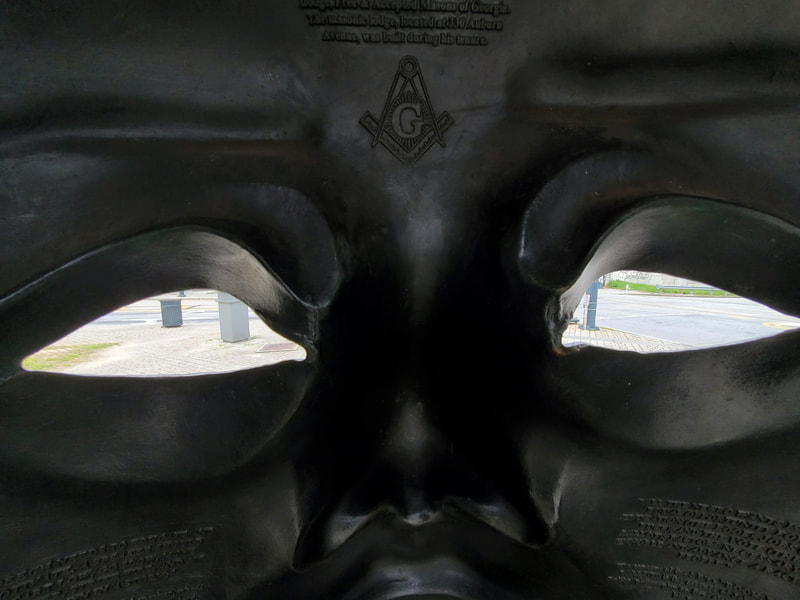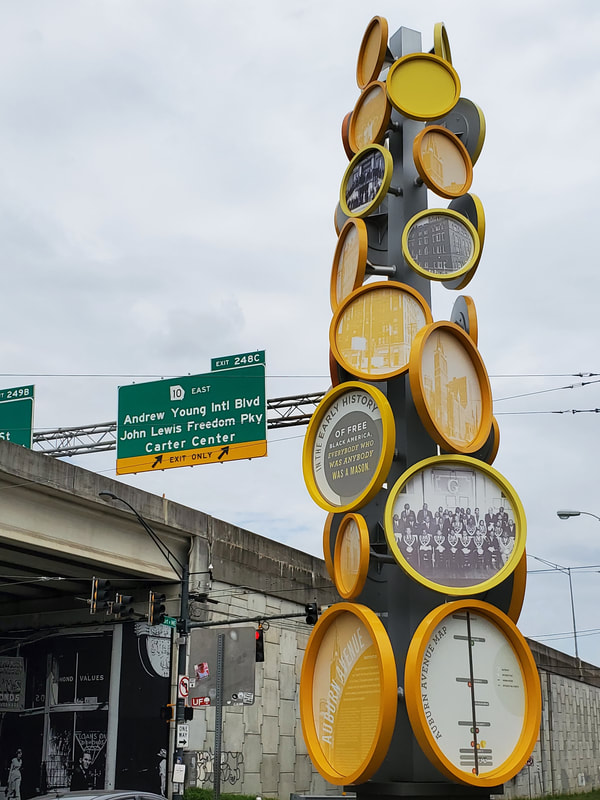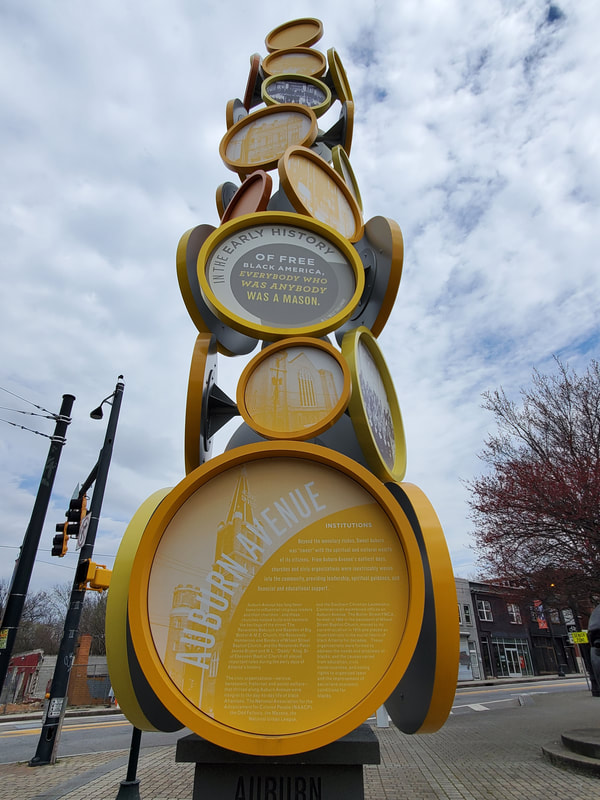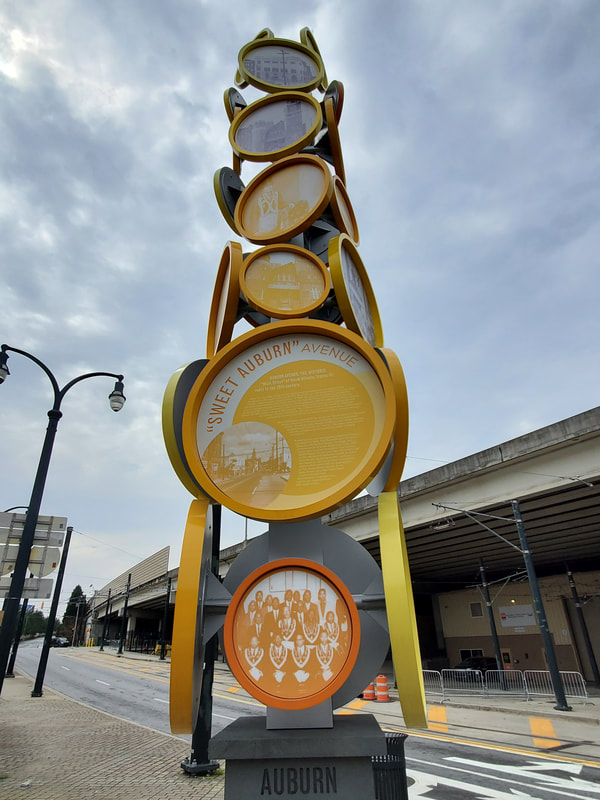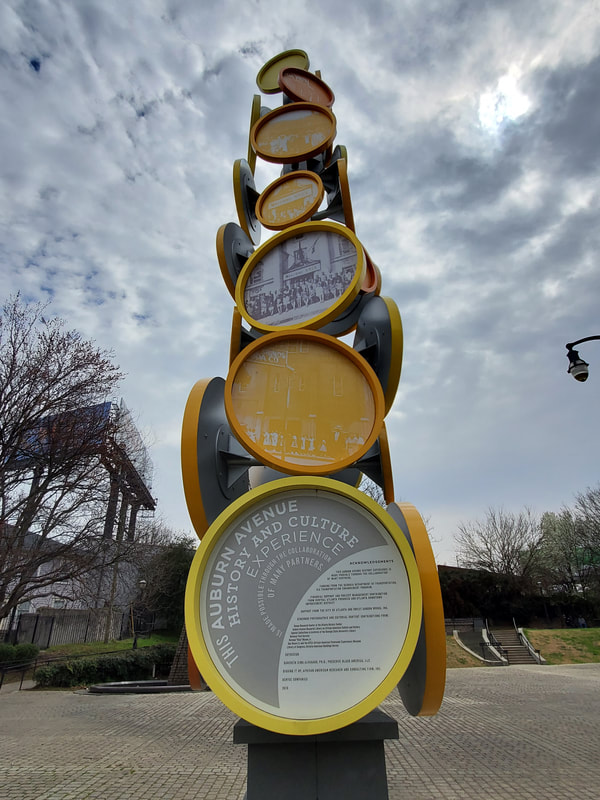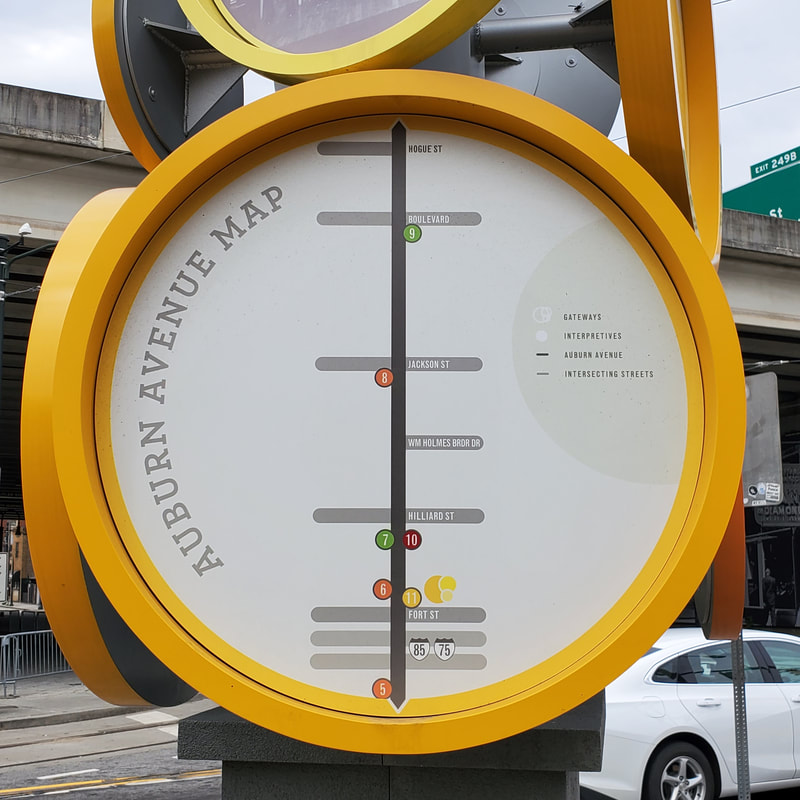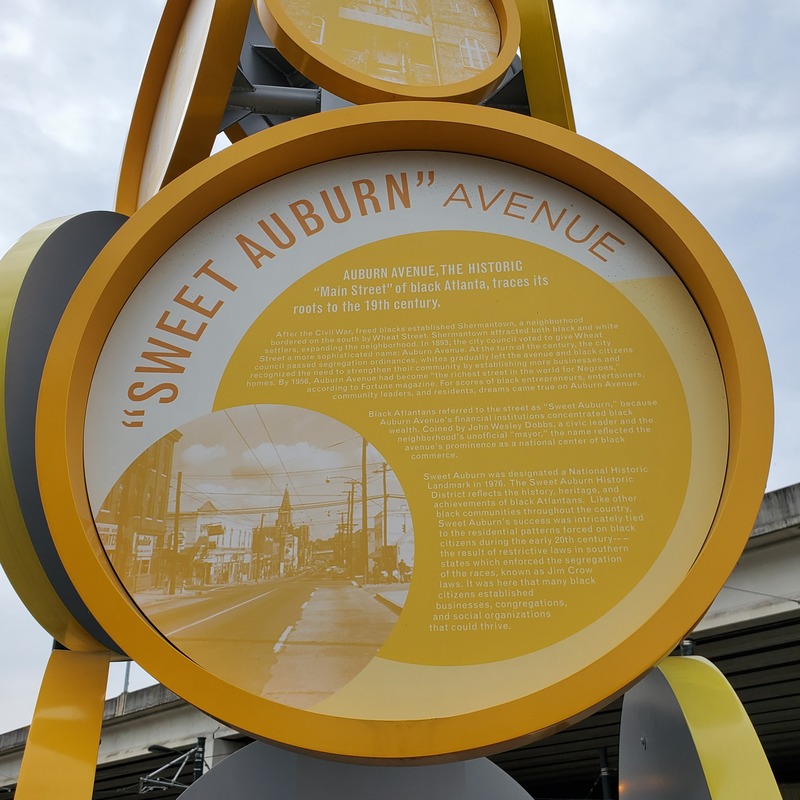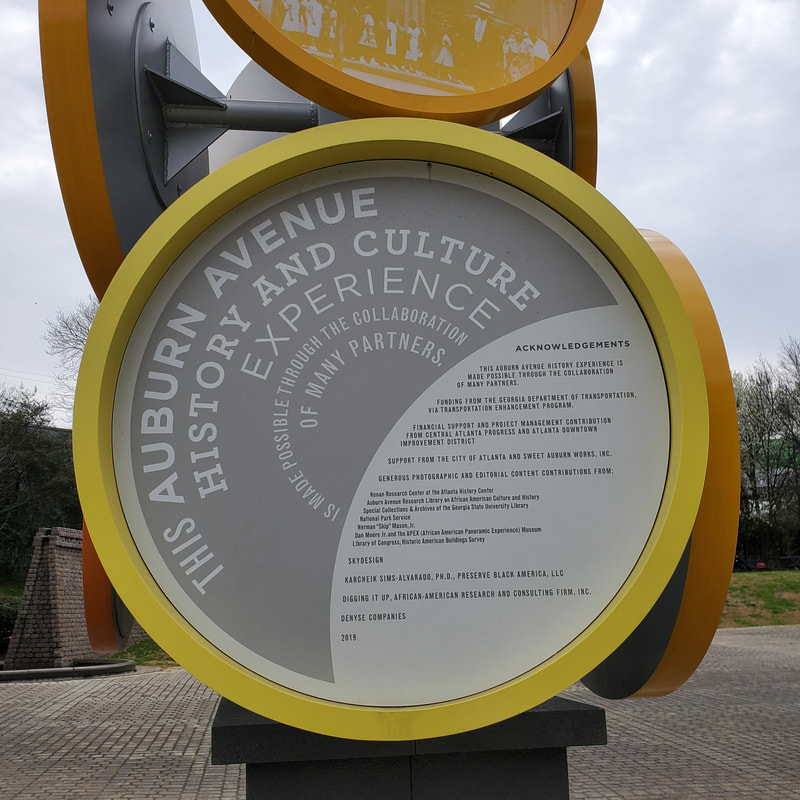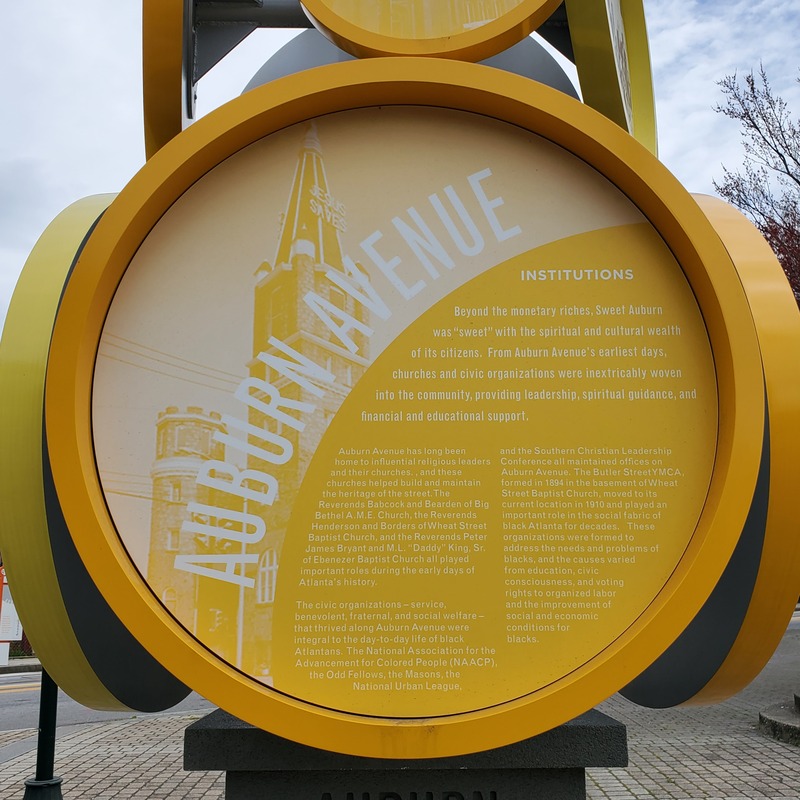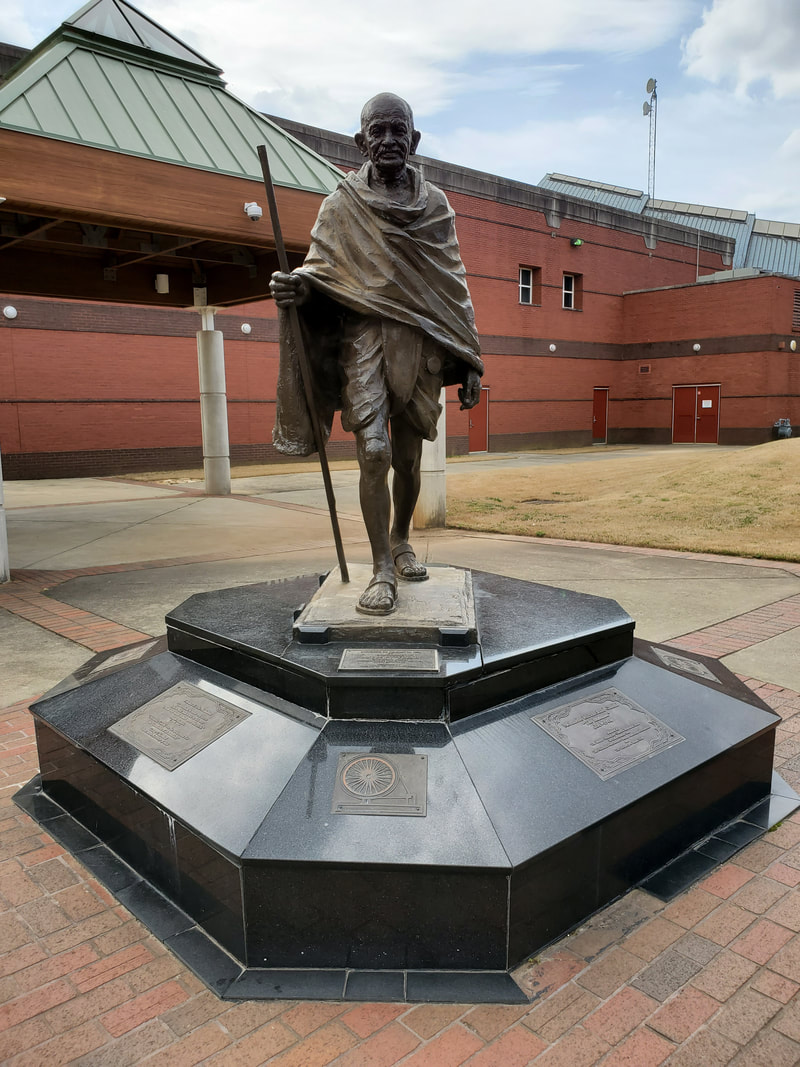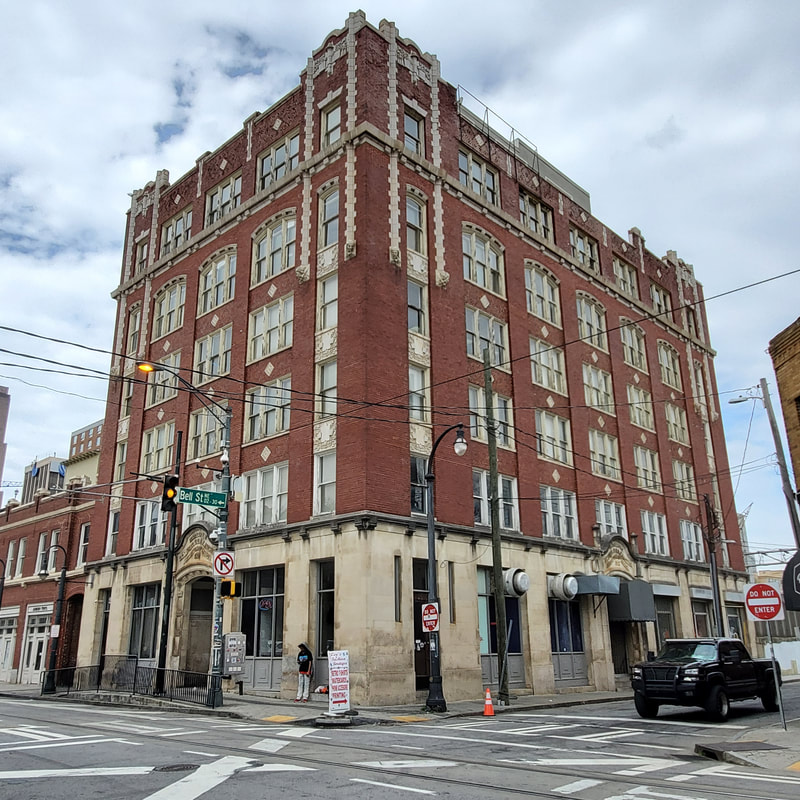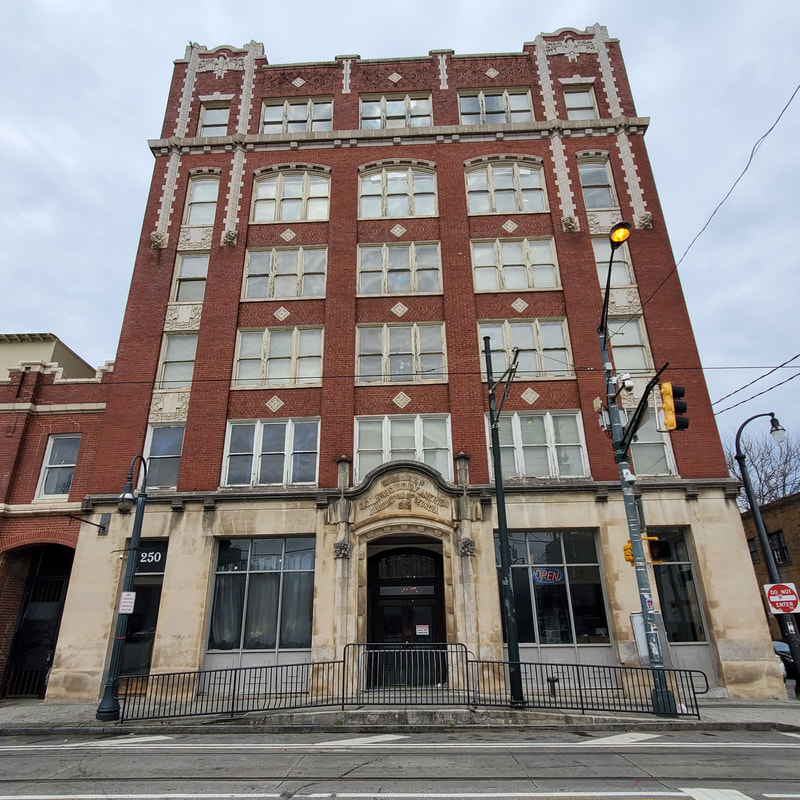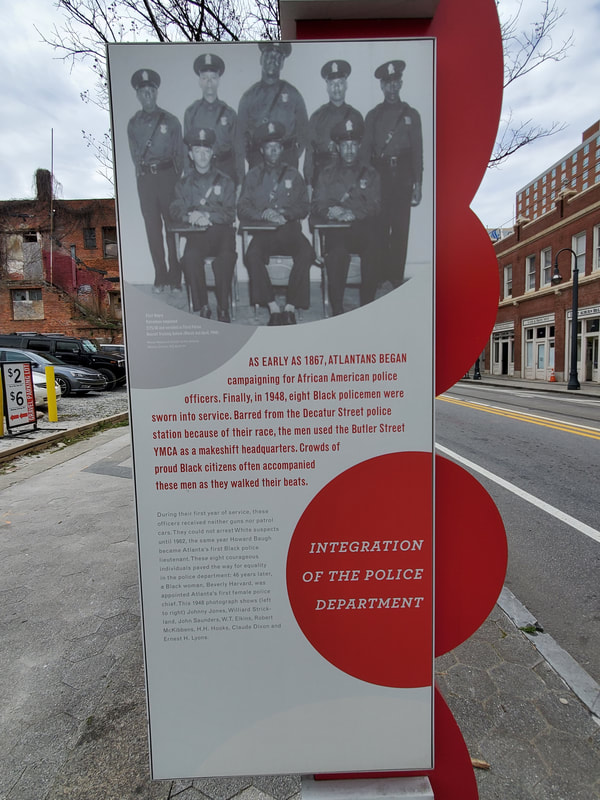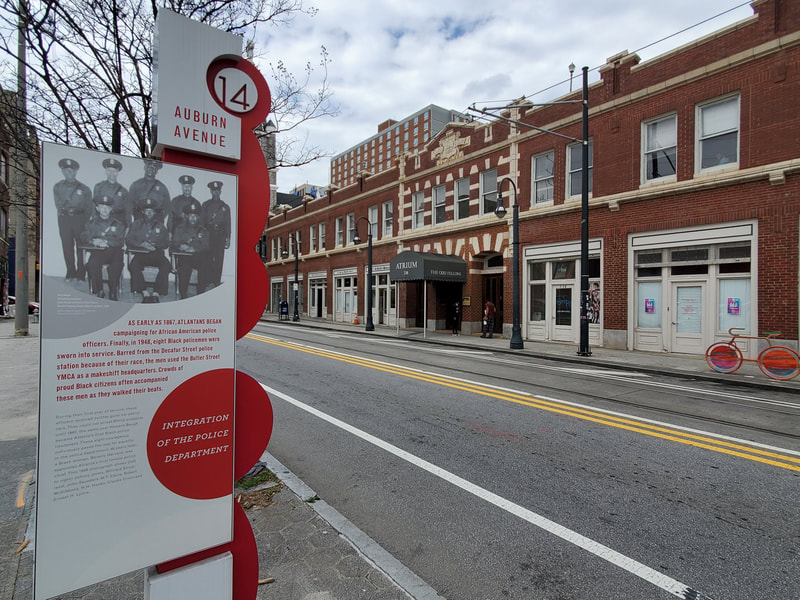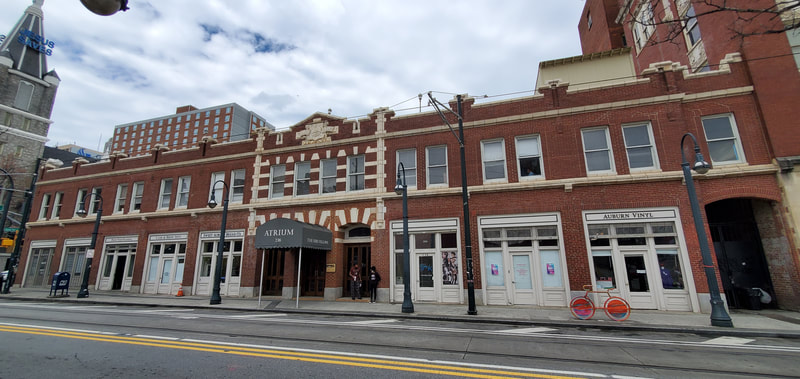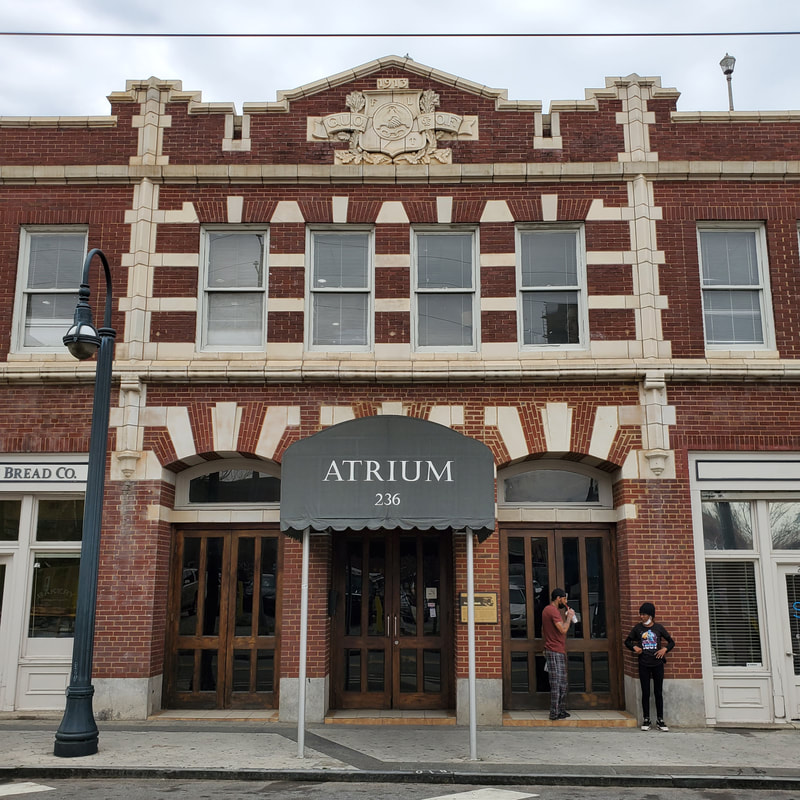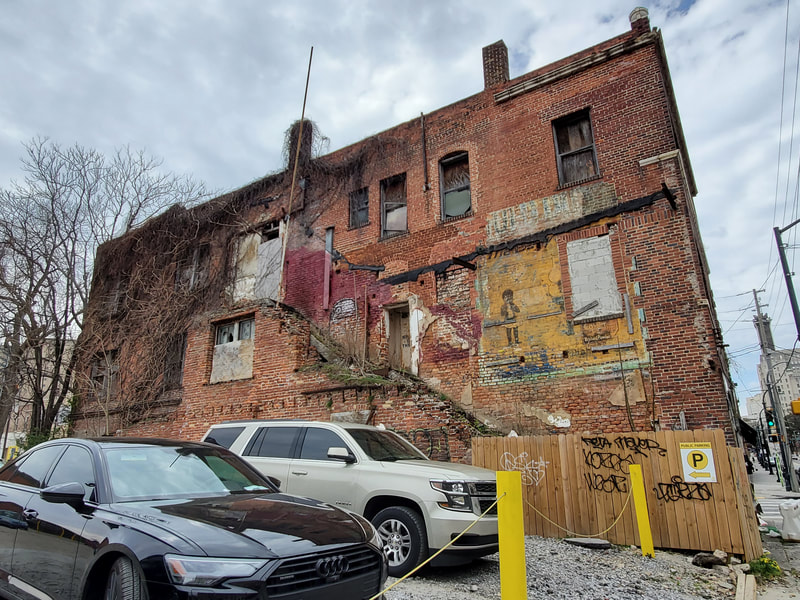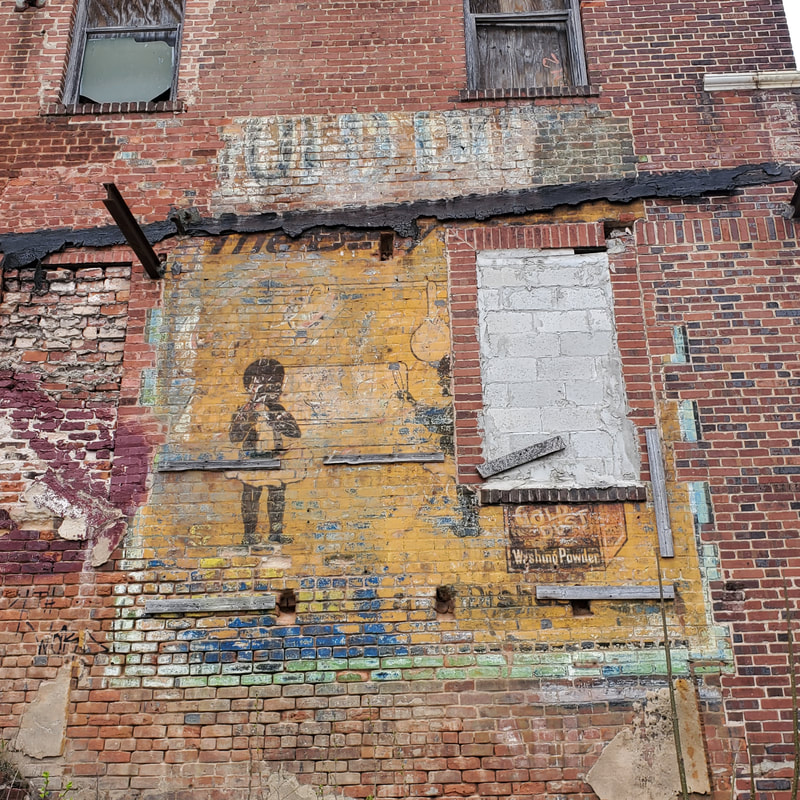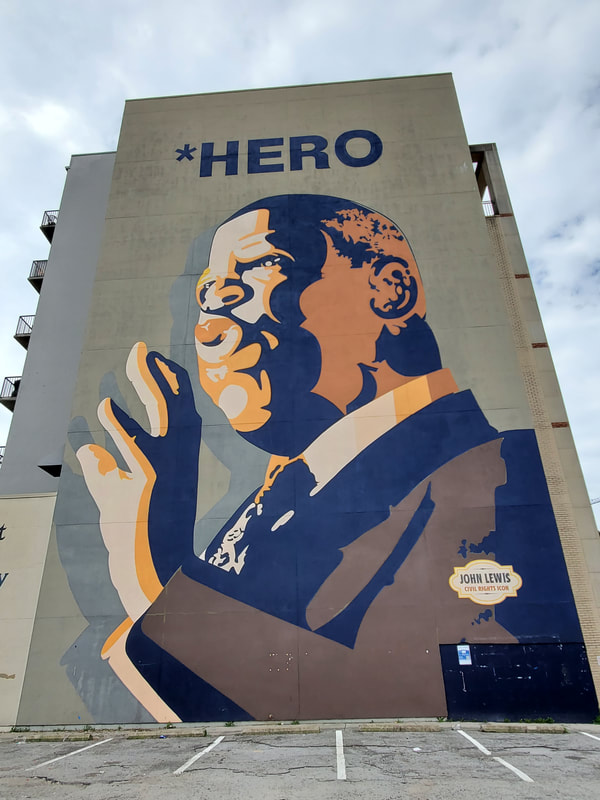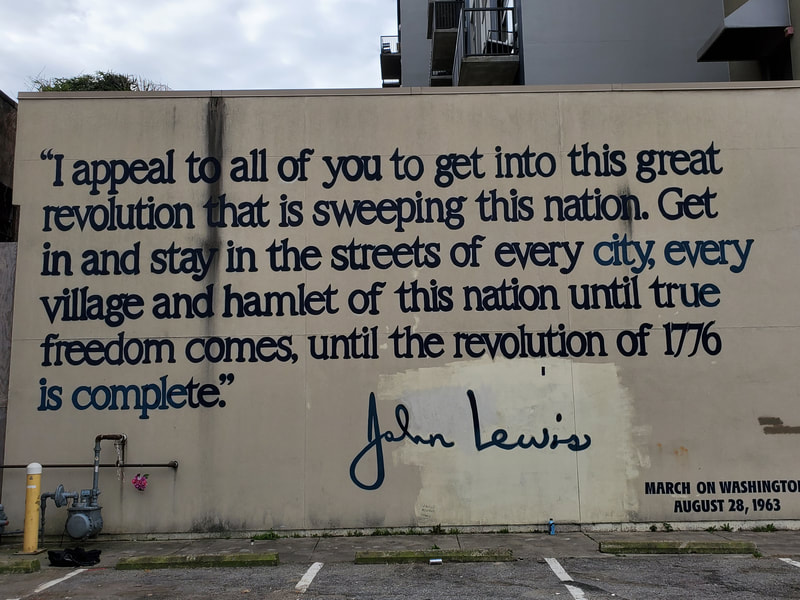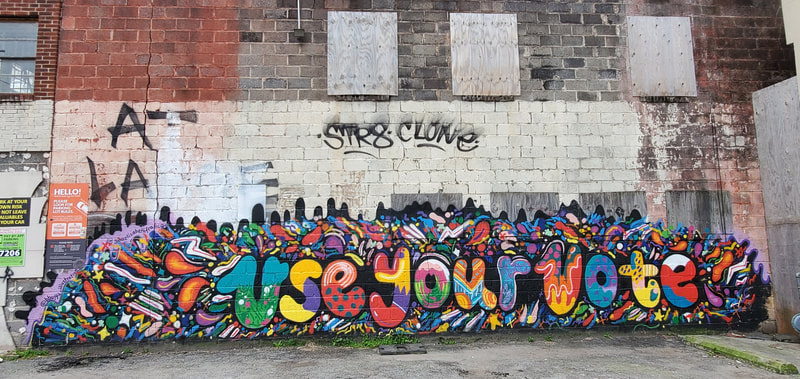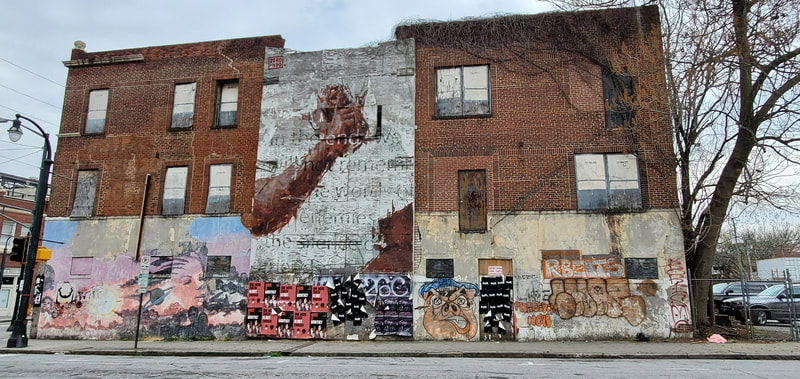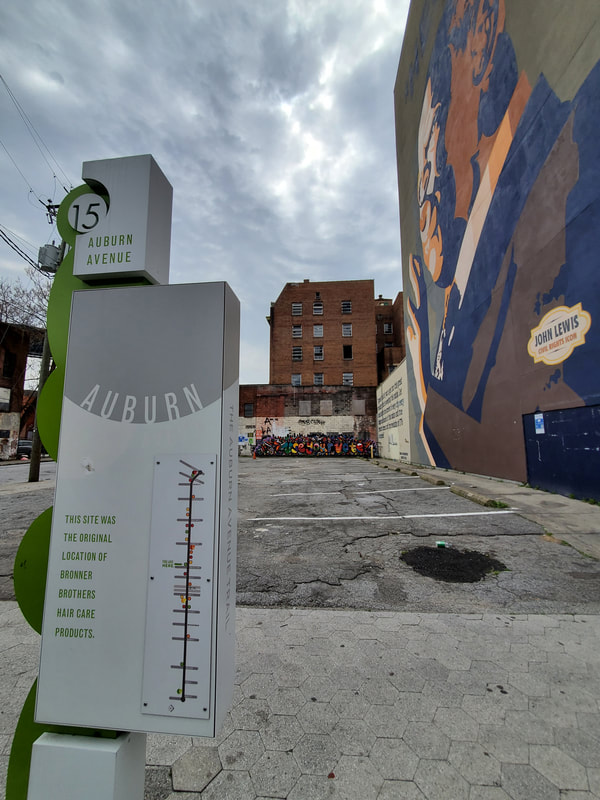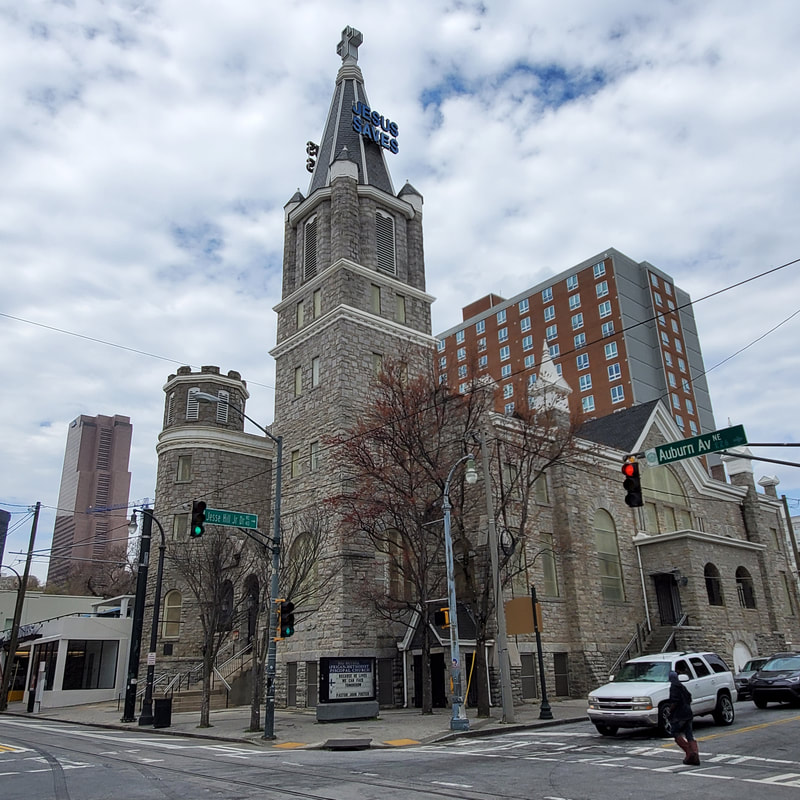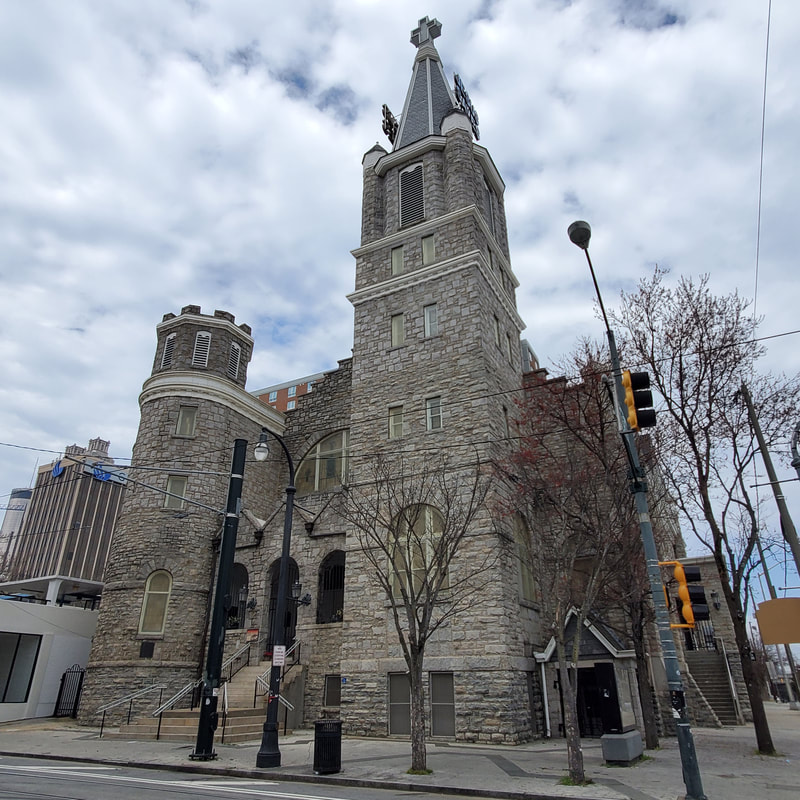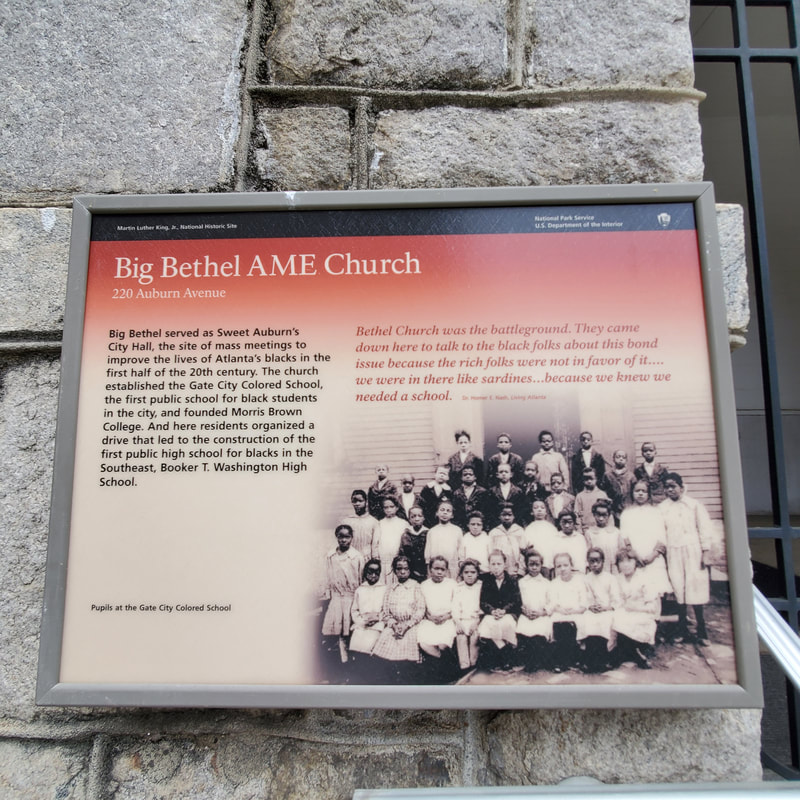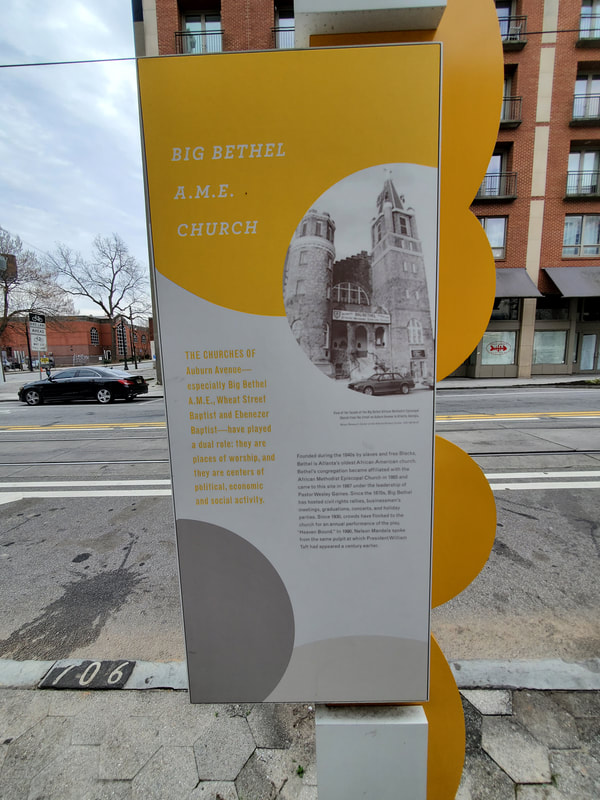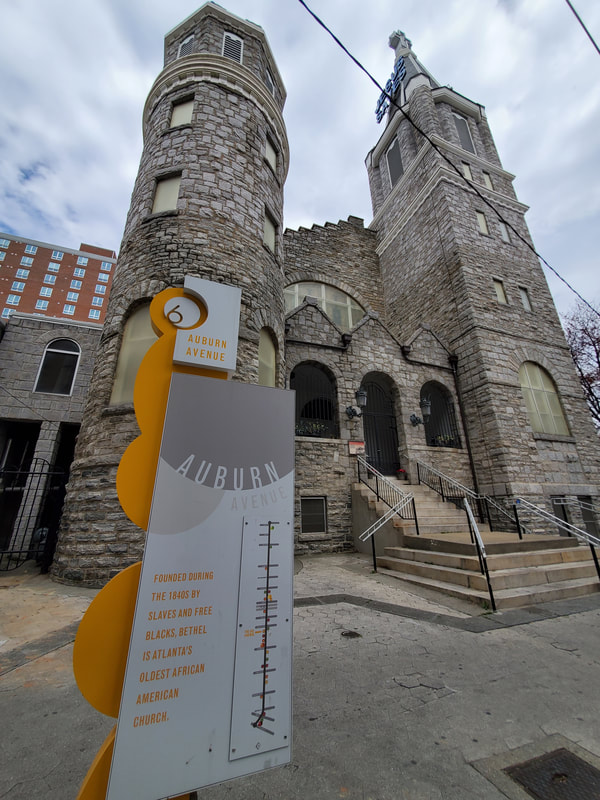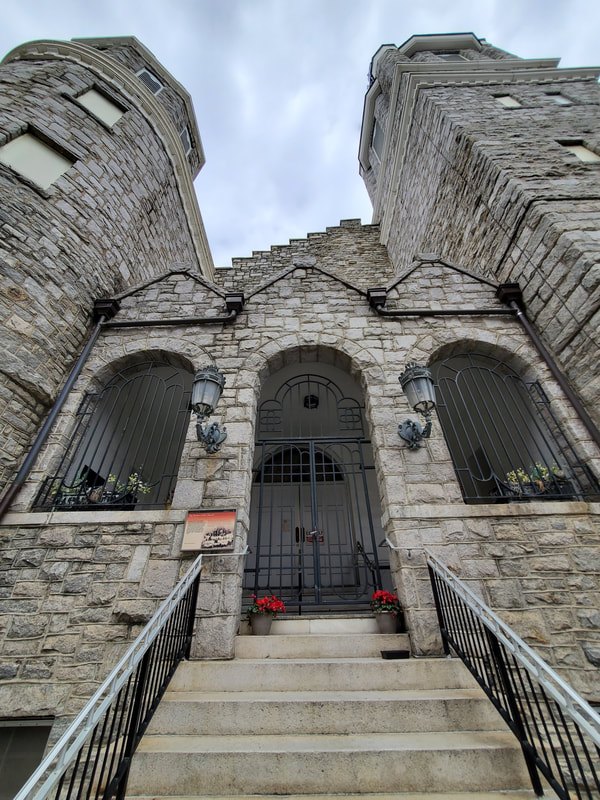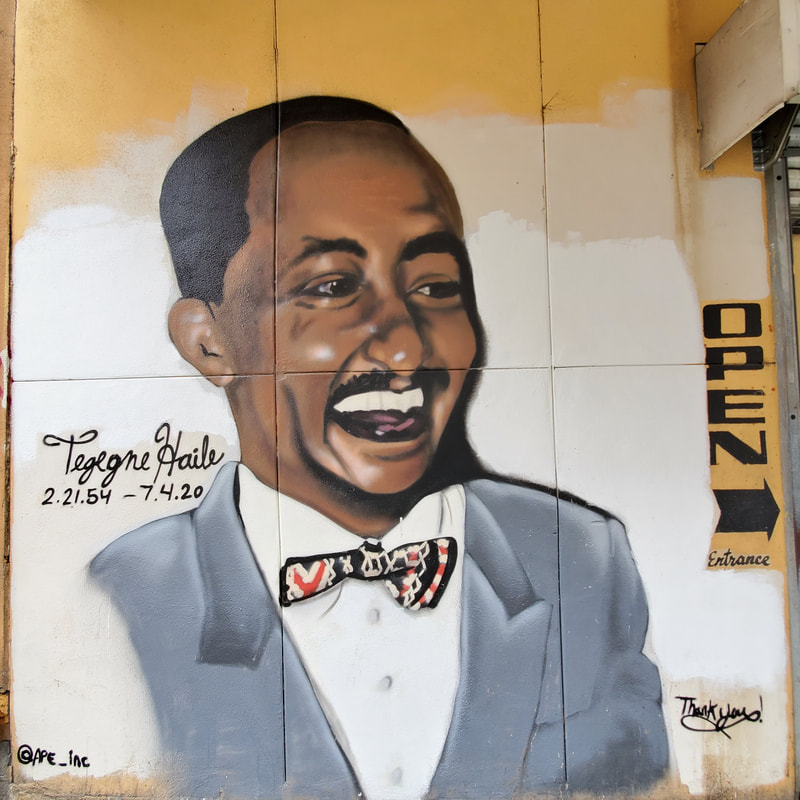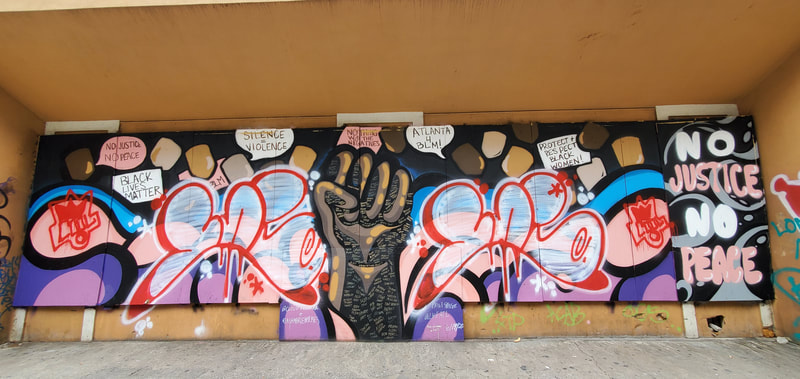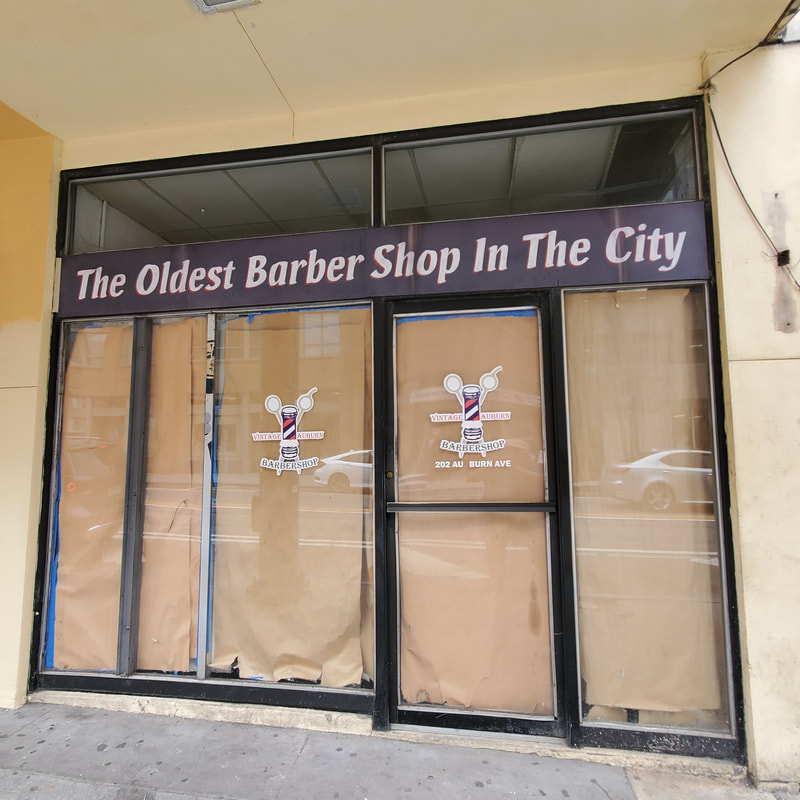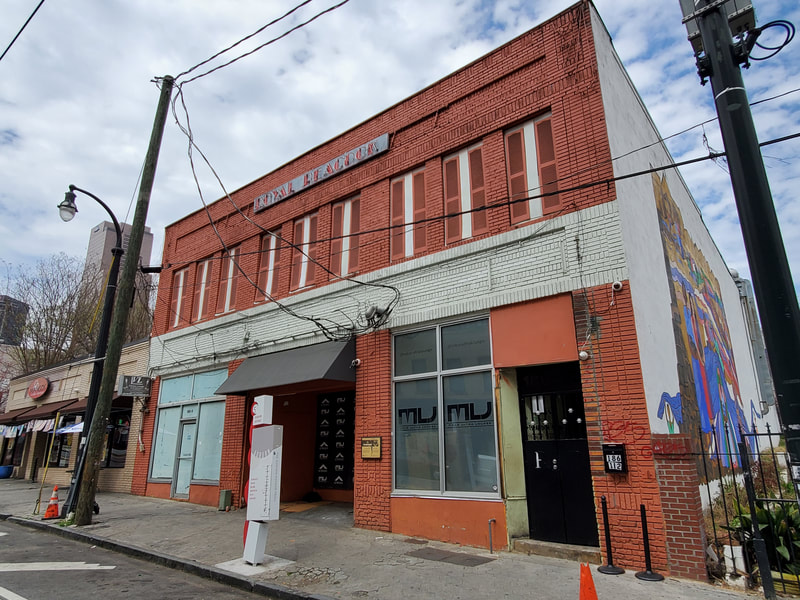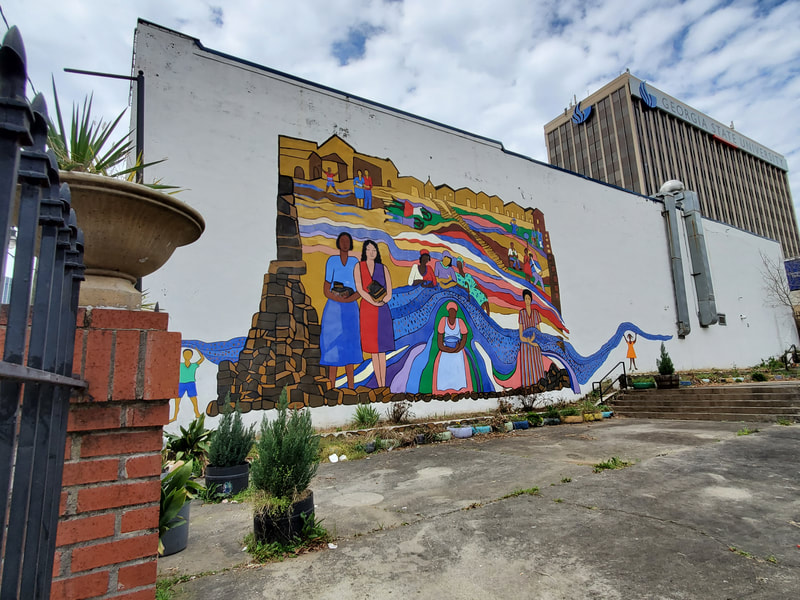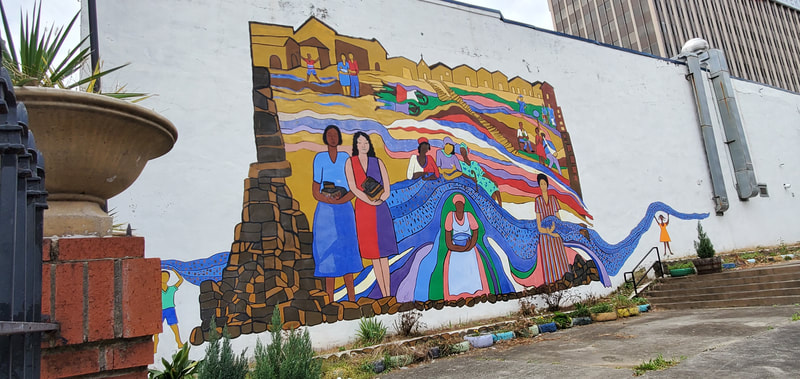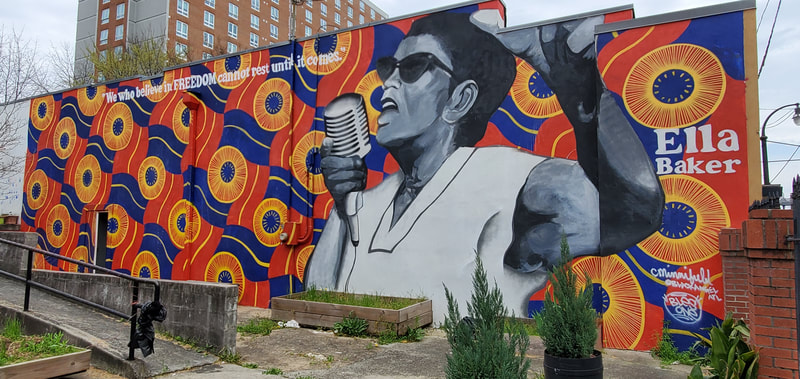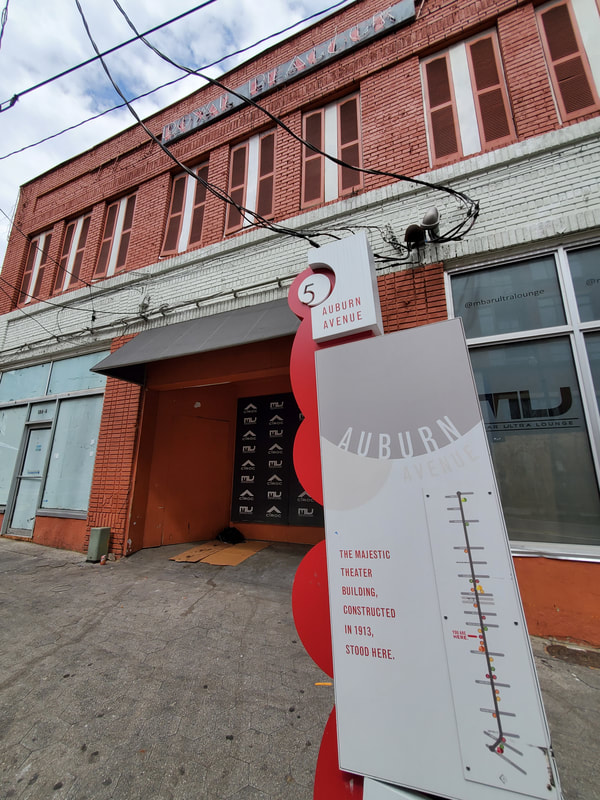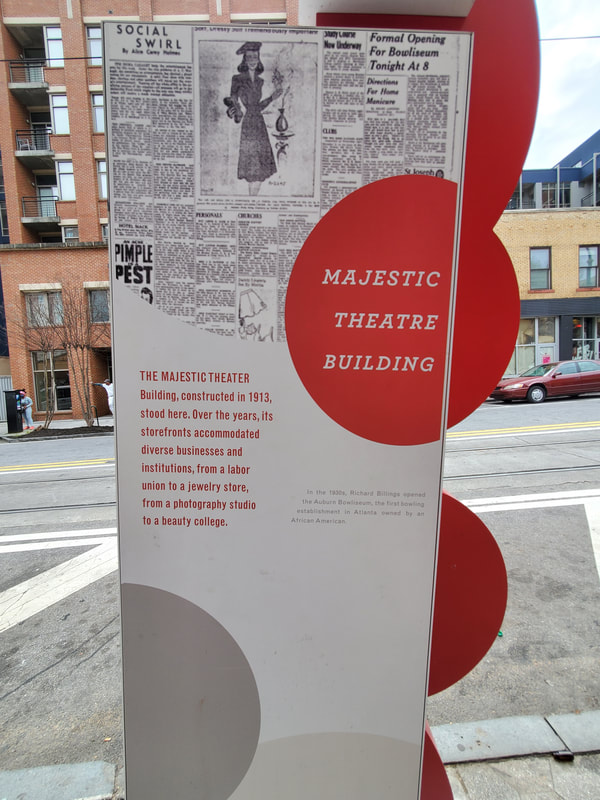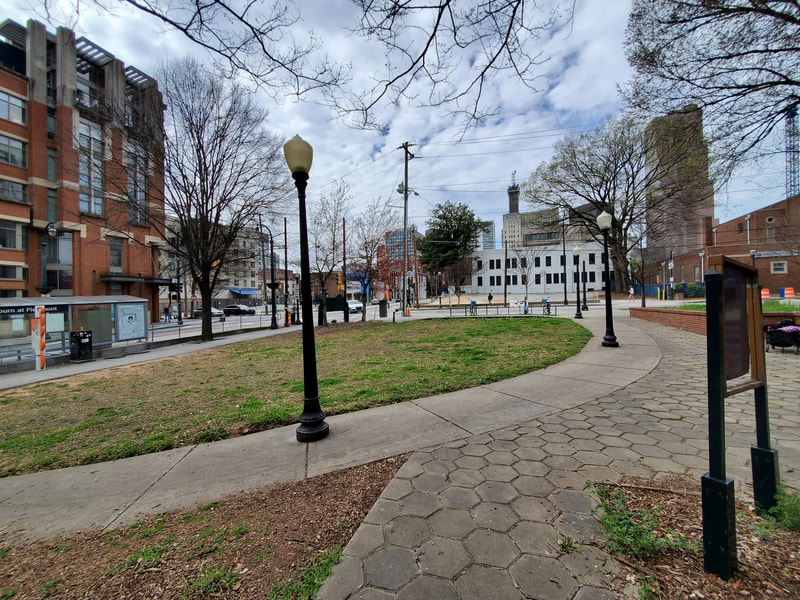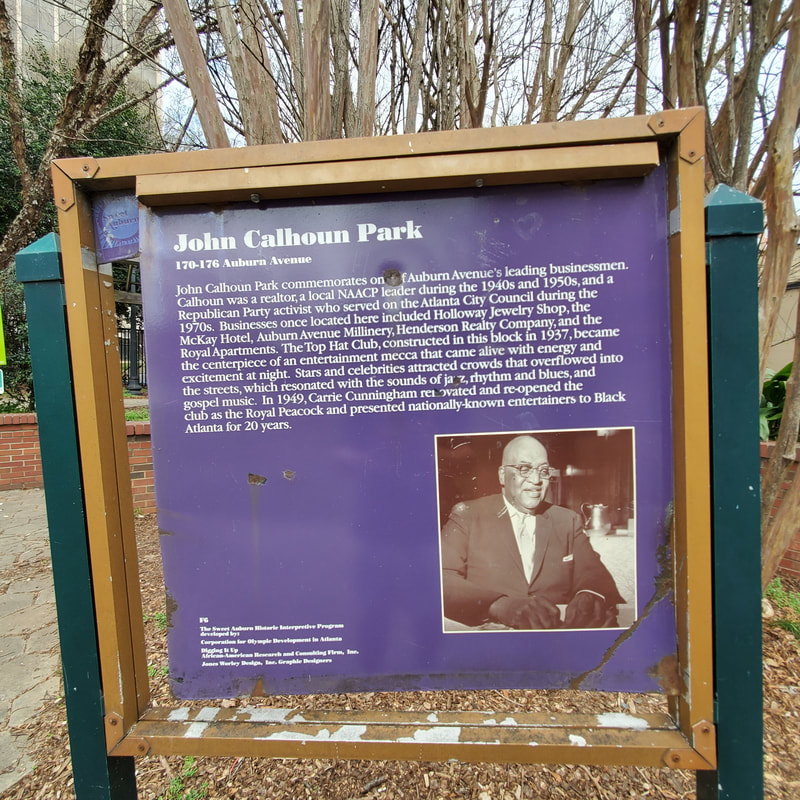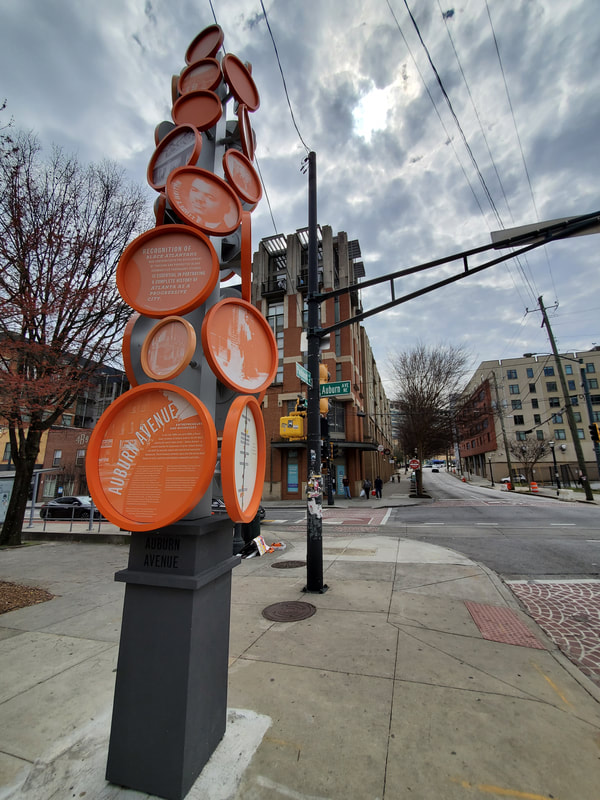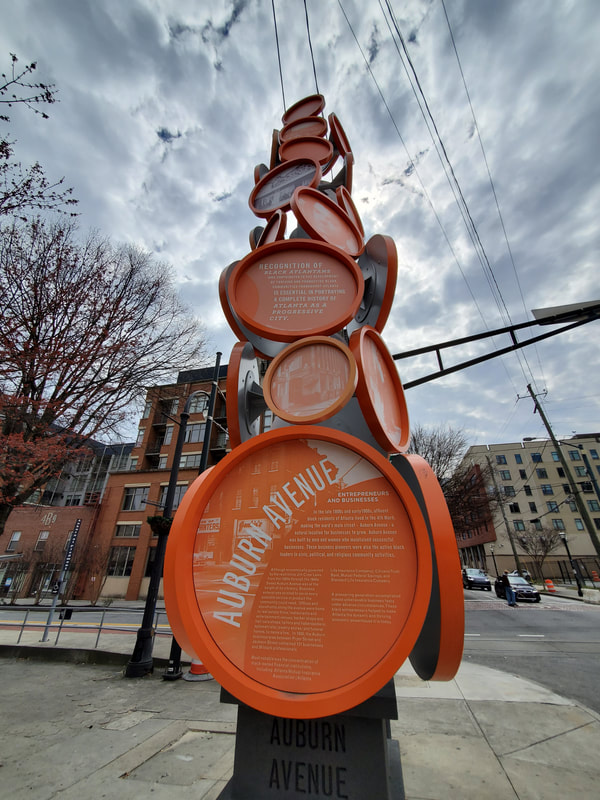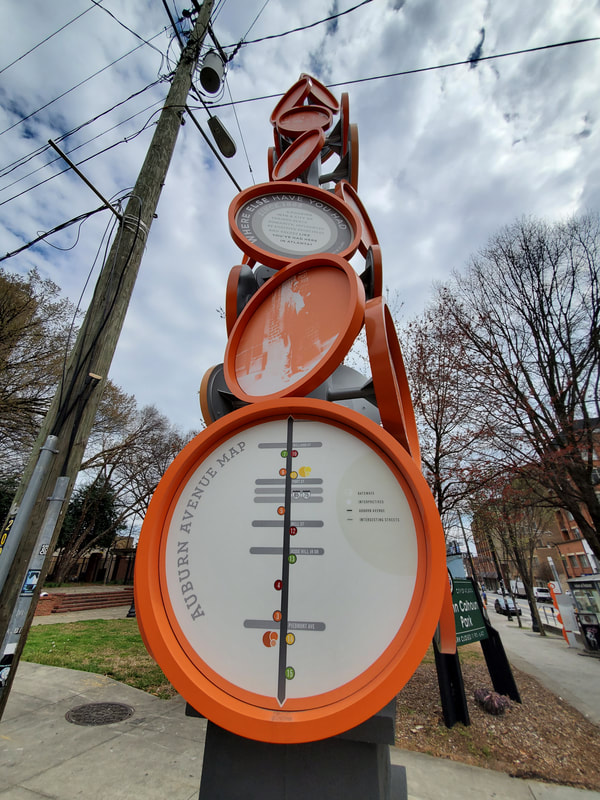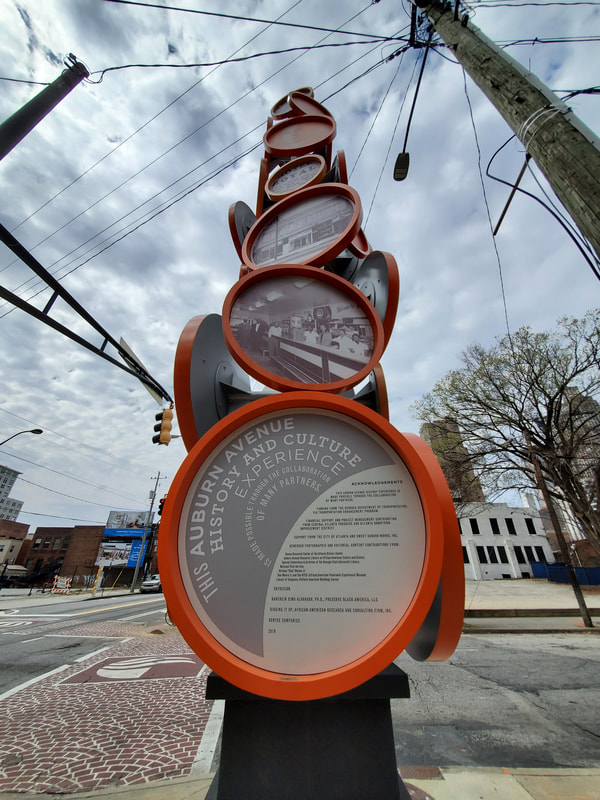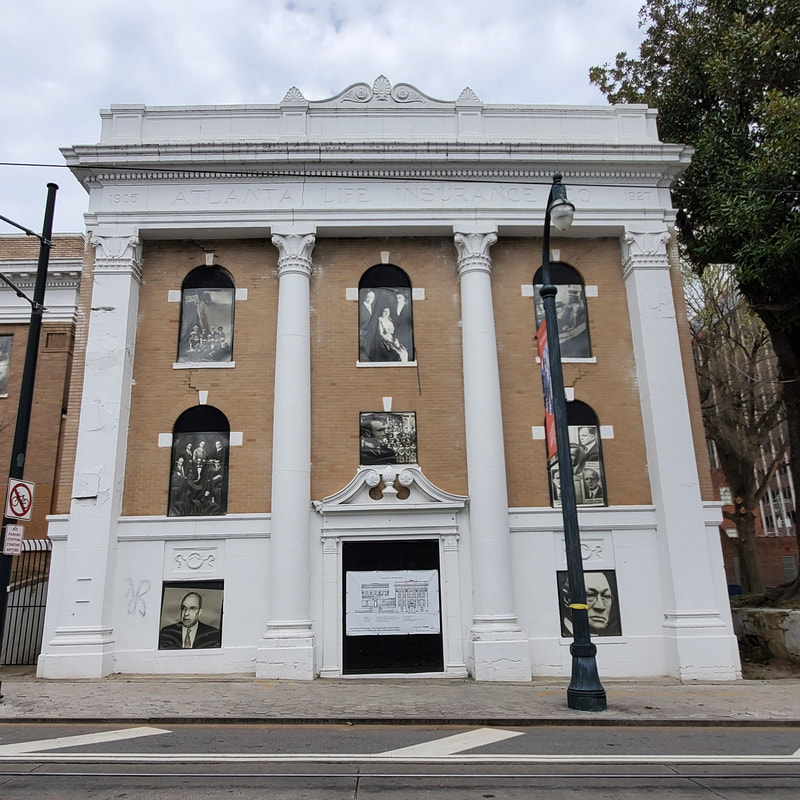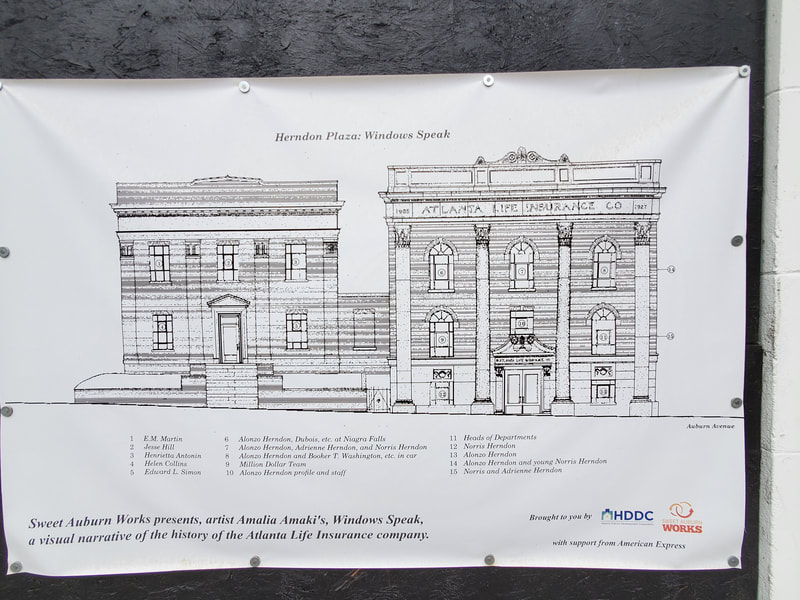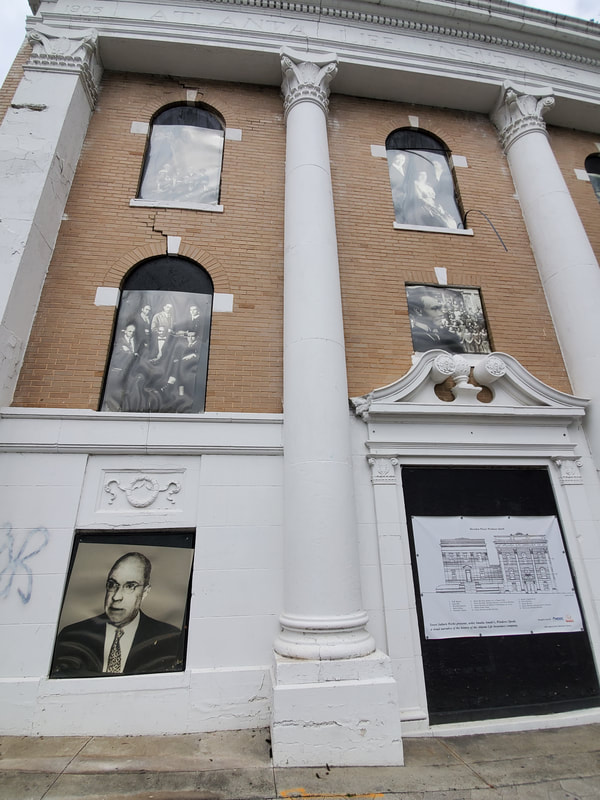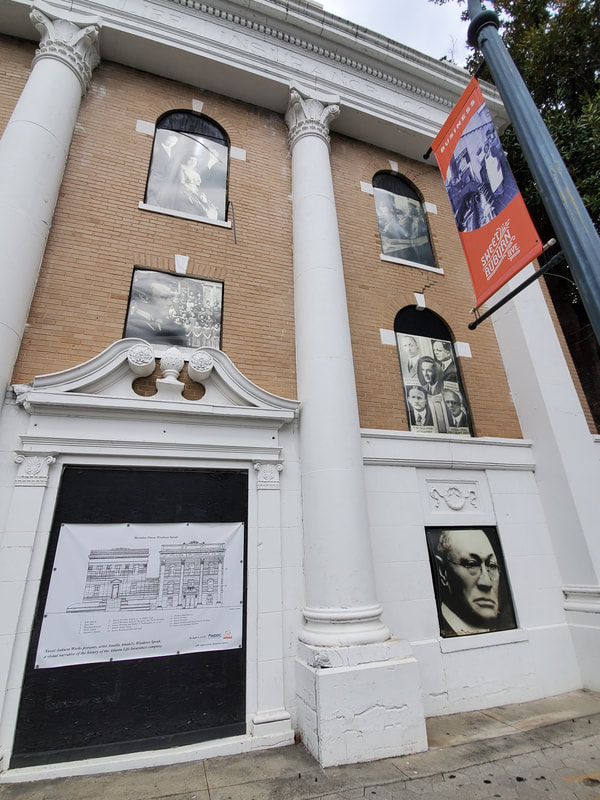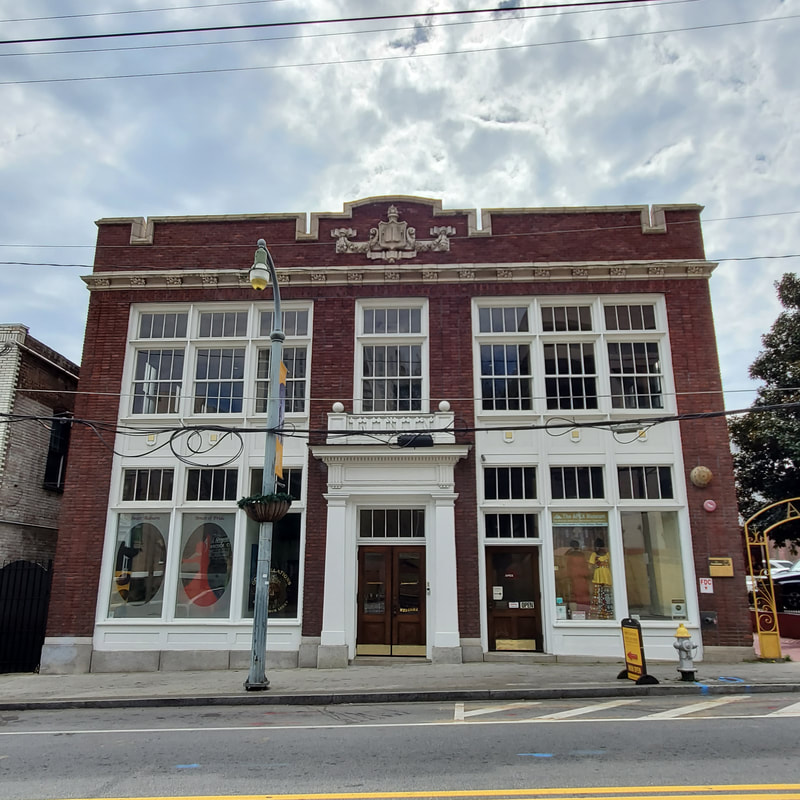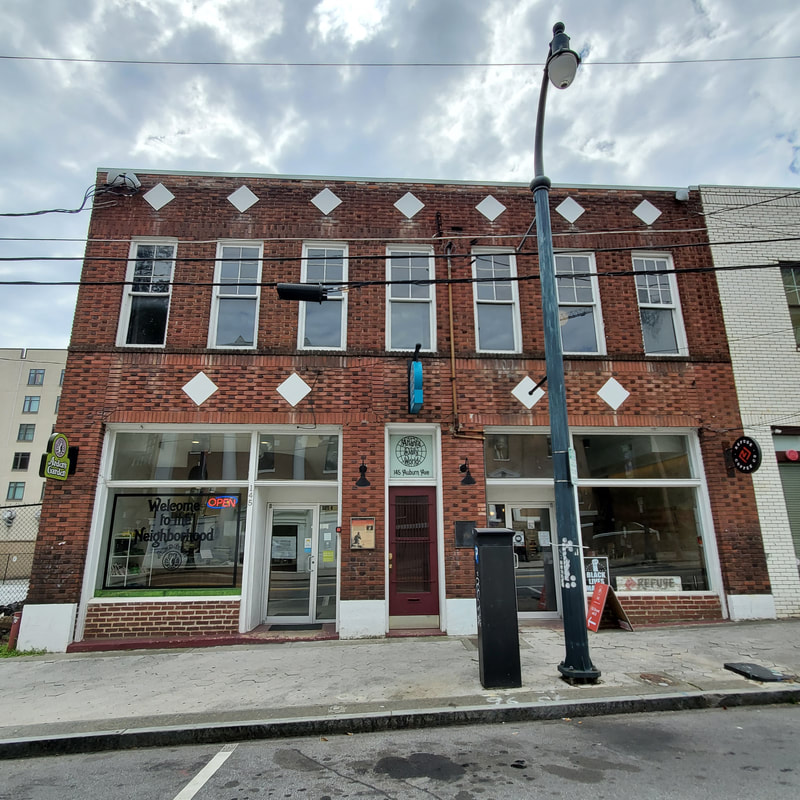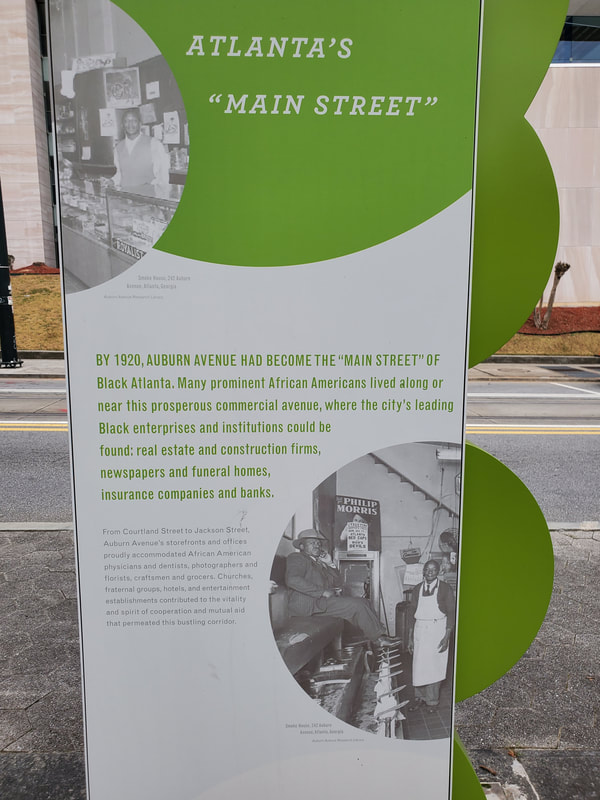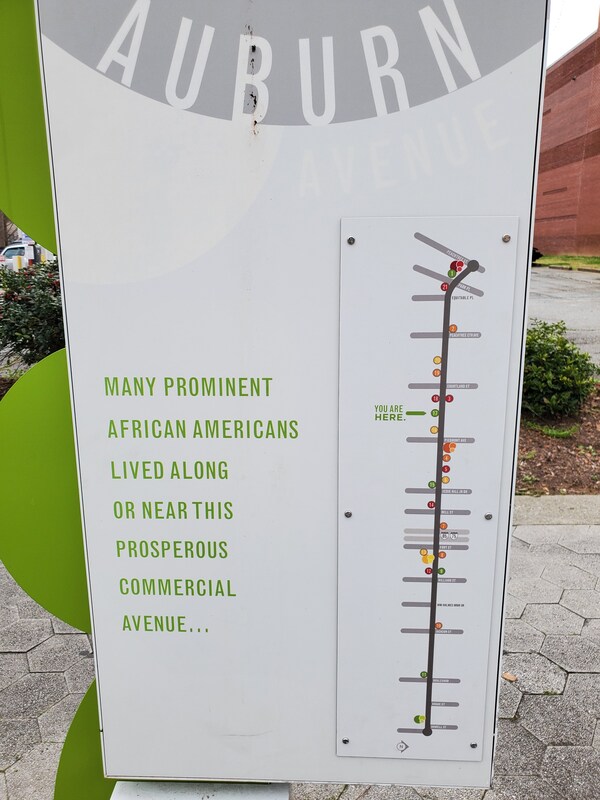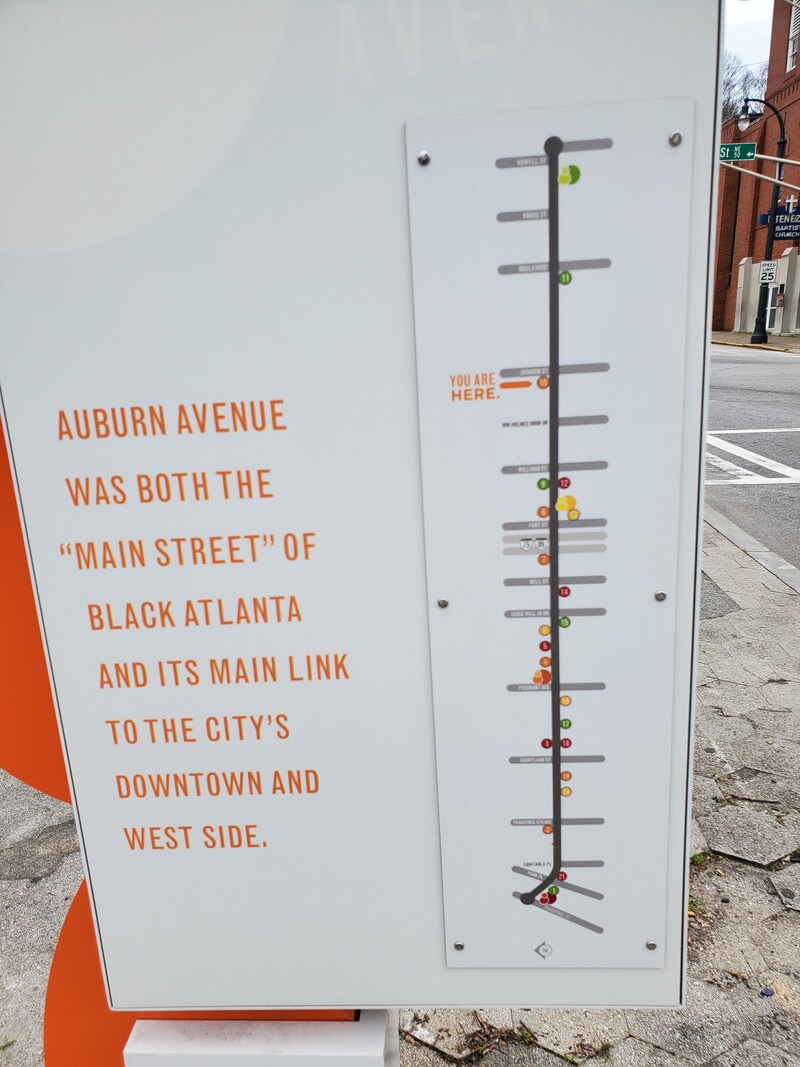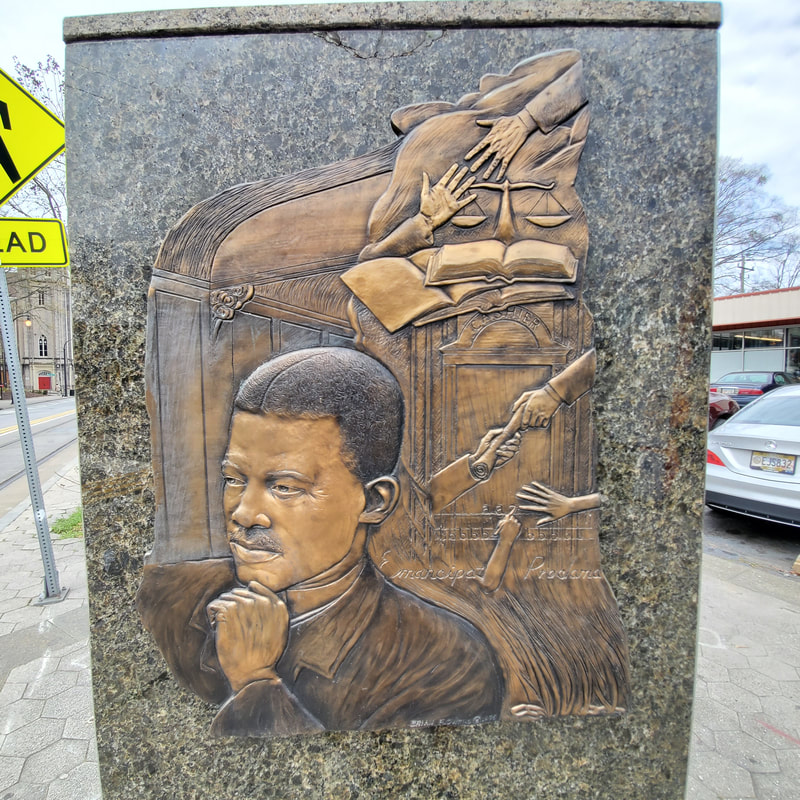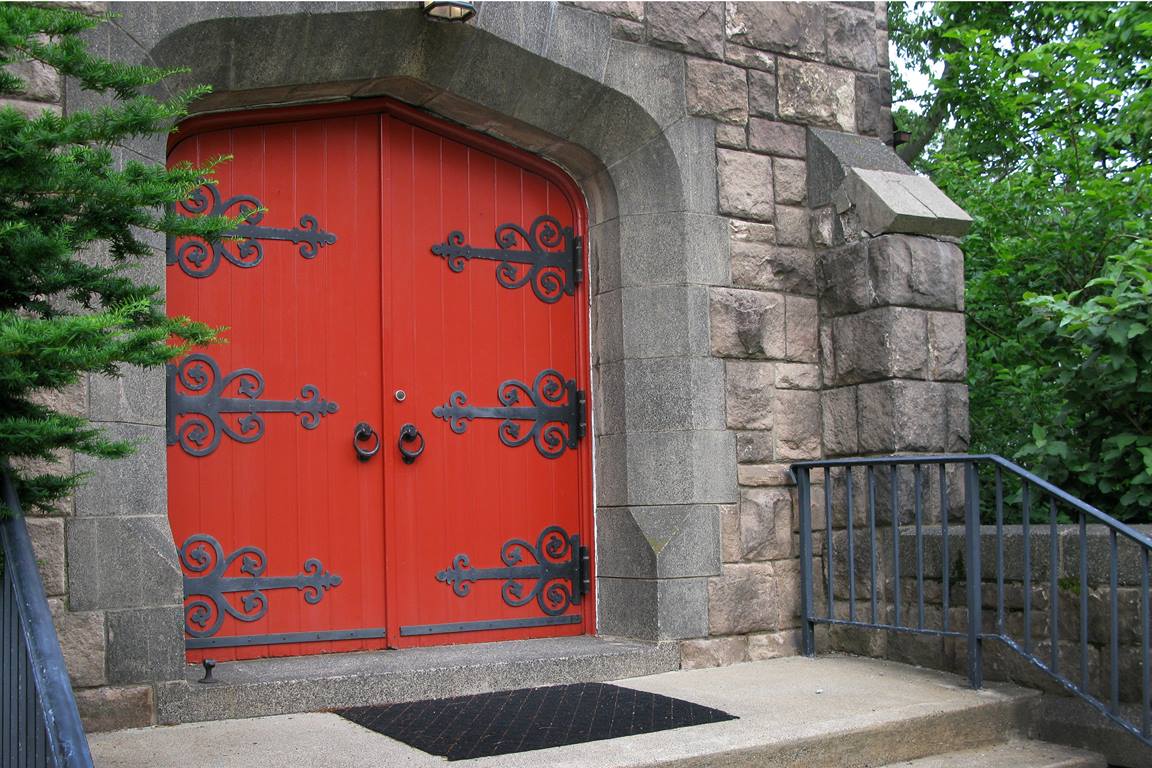Sweet Auburn Photo Tour
|
I created this online tour with some photos I took while doing a recon mission for my Atlanta Freedom Trail Tour. At the bottom of this page, you will find a list of articles, websites and other resources. The image above is part the Auburn Avenue Historic and Cultural Information Project described below. That is the north wall that holds up the I-75/75 overpass over Auburn Ave. I hope you enjoy the tour. ~ ATLsherpa ~
|
Feel the History!
Concentrated along a short mile and a half of Auburn Avenue, the Sweet Auburn Historic District reflects the history, heritage and achievements of Atlanta's African Americans. The name Sweet Auburn was coined by John Wesley Dobbs, referring to the "richest Negro street in the world." Like other black communities throughout the country, Sweet Auburn's success was intricately tied to the residential patterns forced on African Americans during the early 20th century--the result of restrictive laws in southern states which enforced segregation of the races, known as Jim Crow laws. It was here that many African Americans established businesses, congregations, and social organizations. Source: US National Park Service
This photo tour was created by ATLsherpaPlease subscribe to my complimentary podcast & newsletter for updates and access to new educational tools. Thank you.
|
Historic & Cultural Information Project
|
The Auburn Avenue Historic and Cultural Information Project includes two major components:
|
John Wesley Dobbs Plaza
John Wesley Dobbs (March 26, 1882 – August 30, 1961) was a civic and political leader in Atlanta. He was often referred to as the unofficial "mayor" of Auburn Avenue. Dobbs co-founded the Atlanta Negro Voters League with civil rights attorney A.T. Walden, leading voter registration efforts that registered 20,000 African Americans in Atlanta from 1936-1946. This new political power helped gain the hiring in 1948 of the first eight African-American police officers in Atlanta, the same year that the federal government began to integrate the armed services. In 1949 the city finally installed lighting along Auburn Avenue, the main retail street of the African-American community. Learn more: Black Leader of Atlanta, Part 1
"Through His Eyes" Monument
The monument pays tribute to civil right leader John Wesley Dobbs, who was a Grand Master of the Prince Hall Masonic Lodge of Georgia, a leader in voter registration and political thought, and a famous orator who coined the phrase “Sweet Auburn. The “portrait mask” depicting Dobbs is inspired by the 12th century Nigerian life-sculpture tradition, and includes text and quotes inscribed on the interior of the mask, from where Auburn Avenue can be literally viewed “through his eyes.” Ralph Helmick, a formally trained sculptor, was selected through CODA’s nationwide Call for Artists Initiative, and installed this piece for the 1996 Atlanta Olympics. ~ City of Atlanta Office of Cultural Affairs Public Art Program
"Through His Eyes" Monument
The monument pays tribute to civil right leader John Wesley Dobbs, who was a Grand Master of the Prince Hall Masonic Lodge of Georgia, a leader in voter registration and political thought, and a famous orator who coined the phrase “Sweet Auburn. The “portrait mask” depicting Dobbs is inspired by the 12th century Nigerian life-sculpture tradition, and includes text and quotes inscribed on the interior of the mask, from where Auburn Avenue can be literally viewed “through his eyes.” Ralph Helmick, a formally trained sculptor, was selected through CODA’s nationwide Call for Artists Initiative, and installed this piece for the 1996 Atlanta Olympics. ~ City of Atlanta Office of Cultural Affairs Public Art Program
The mural enhancement shown below (located on the north wall of the I-75/85 overpass) features large scale images of historic buildings, landmarks, and cultural institutions which exist or previously existed along Auburn Avenue. The mural design team was led by husband and wife Ron Huffman (of Wood PLC) and Therese Huffman (of Signature Design). Project elements were fabricated and installed by DeNyse Companies, and the underpass lighting elements were installed by Brooks Berry Haynie & Associates.
This video was shot under the Auburn Avenue overpass of I-75/85
— SLIDE SHOW —
Mahatma Gandhi was born on October 2, 1869, in Porbandar, India, and so began a life that would change the history of his country and the world for the better. After studying law, Gandhi famously advocated for the rights of Indians, ultimately becoming "Bapu," the father of the Indian independence movement. But his non-violent activism reached far beyond his homeland, becoming a global call for the oppressed all over the world to unite and stand up for freedom and justice through peaceful protest. |
Majestic Theater Block
The Royal Peacock Club provided an elegant setting where many African Americans could perform and bring the changing styles of black popular music to Atlanta. Originally called the Top Hat Club when it opened in 1938, the club hosted local talent and national acts such as B.B. King, the Four Tops, the Tams and Atlanta's own Gladys Knight. One of the many significant commercial buildings within the district is the Atlanta Life Insurance Company. The second largest black insurance company in the United States, Atlanta Life Insurance was founded in 1905 by Alonzo Herndon, a former slave from Walton County, Georgia. The company steadily grew so that by 1910, there were more than 42 branch offices. The central building of the Atlanta Life Insurance Company complex is a Beaux Arts building facing Auburn Avenue. The district also includes the Rucker Building, Atlanta's first black-owned office building, constructed in 1904 by businessman and politician Henry A. Rucker. The Atlanta Daily World, the first black-owned daily newspaper, was founded here in 1928. Source: US National Park Service
The photos above were taken walking westward between Jesse Hill Drive and Courtland Street
"Between stimulus and response there is a space. In that space is our power to choose our response. In our response lies our growth and our freedom." – Viktor E. Frankl
Alonzo Herndon
MUST-SEE VIDEO!
Explore More
The resources below are listed in the order in which the subjects appear walking westward along Auburn Avenue from the MLK NHP to Courtland Street and then south to the Capitol along Piedmont Avenue...
